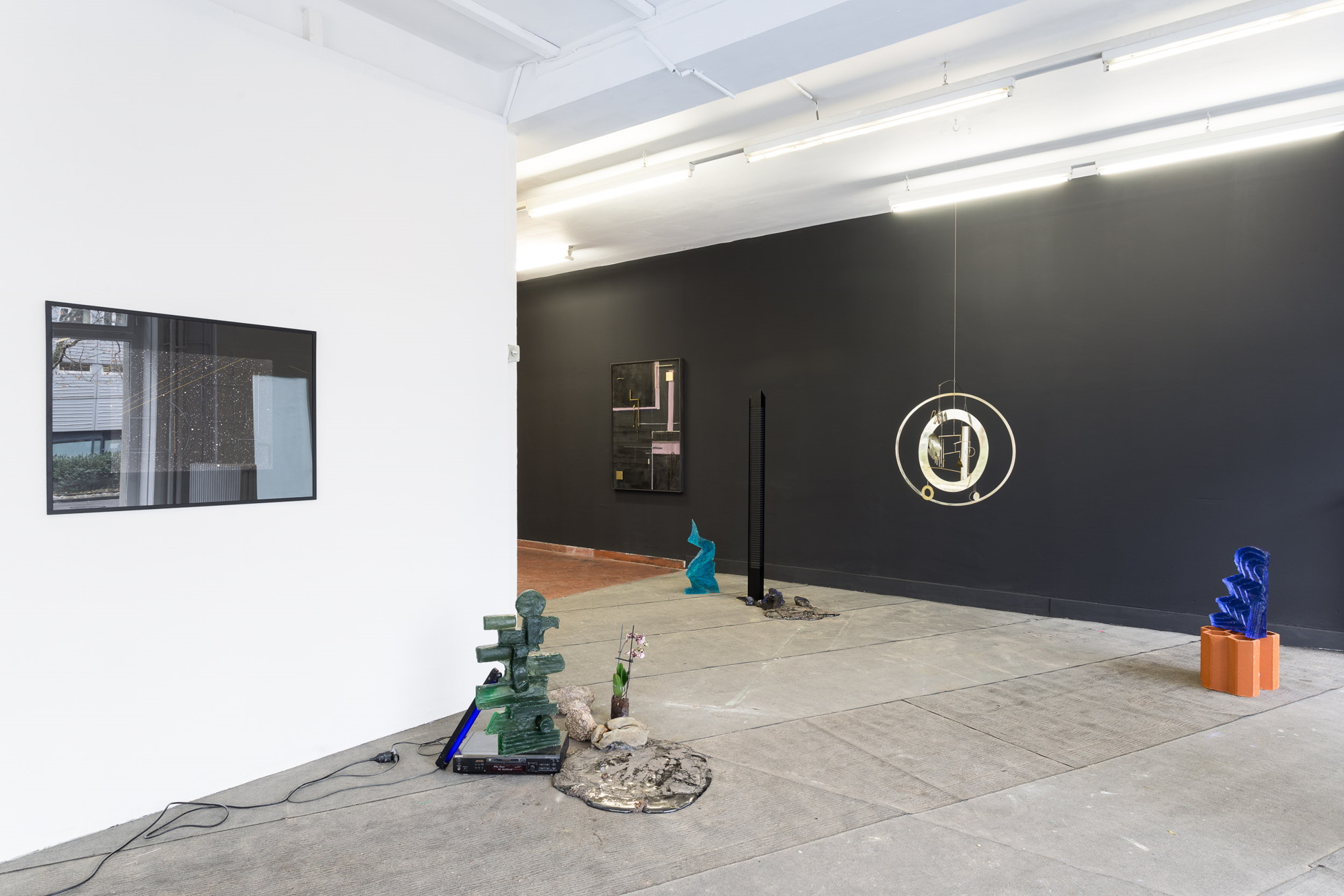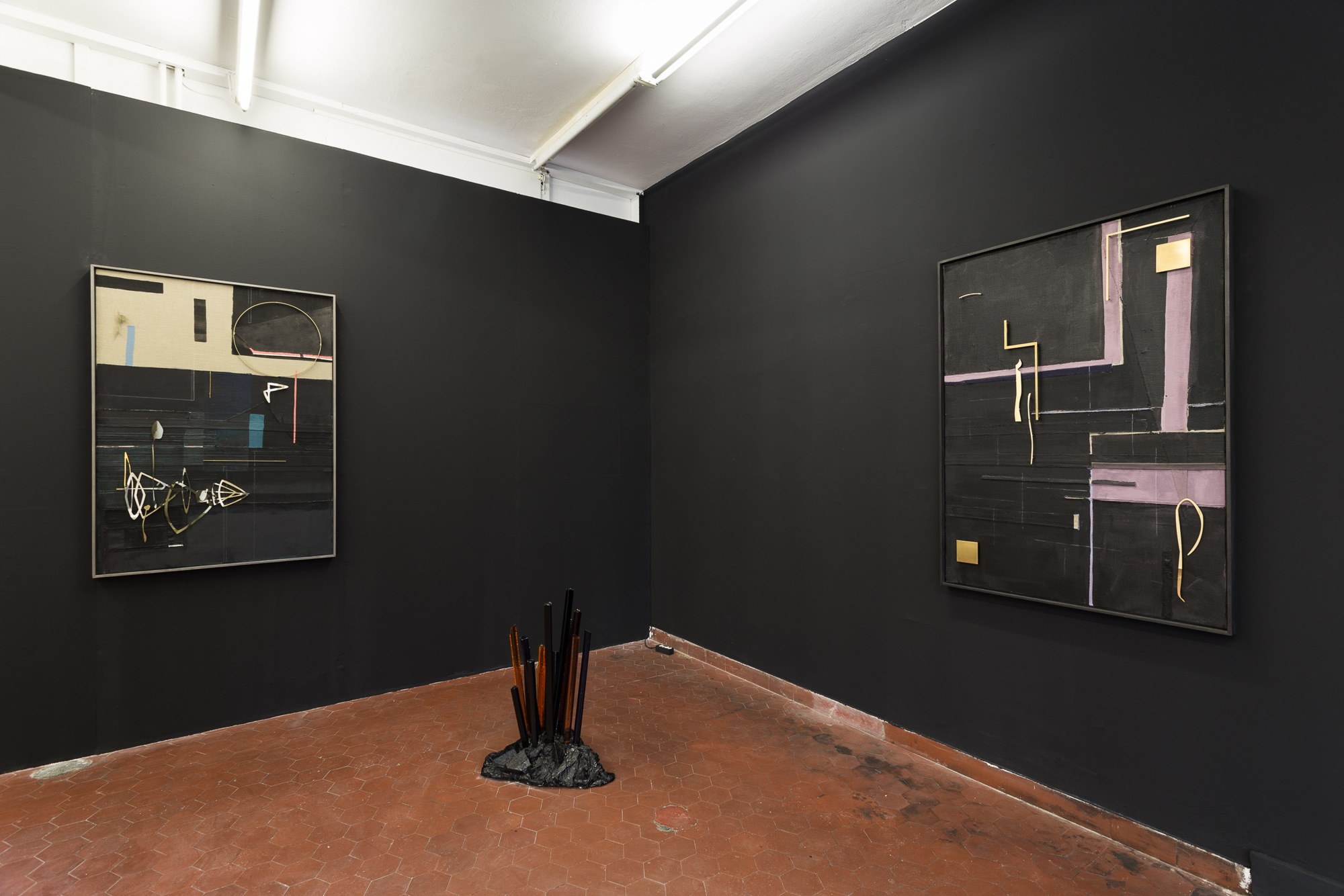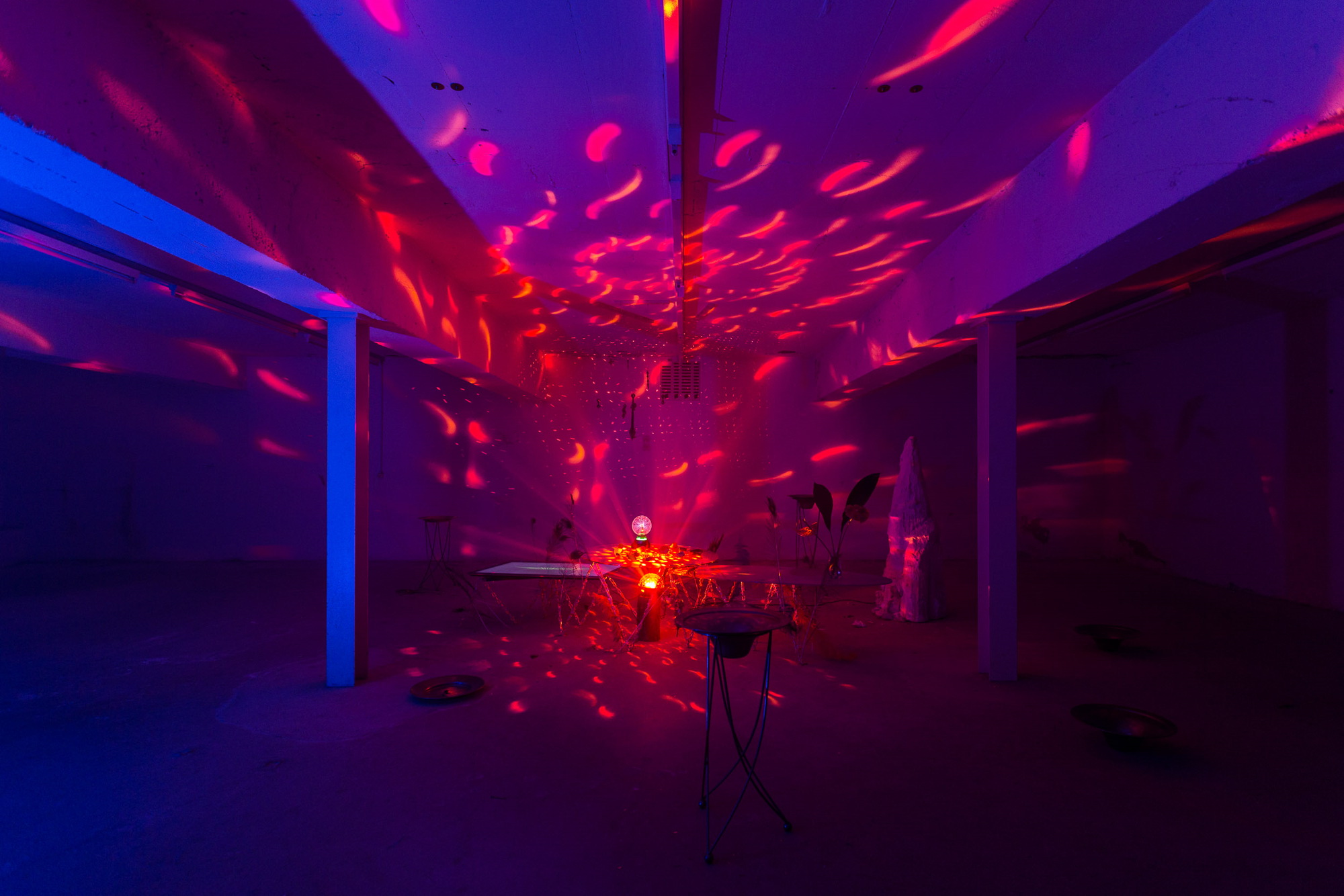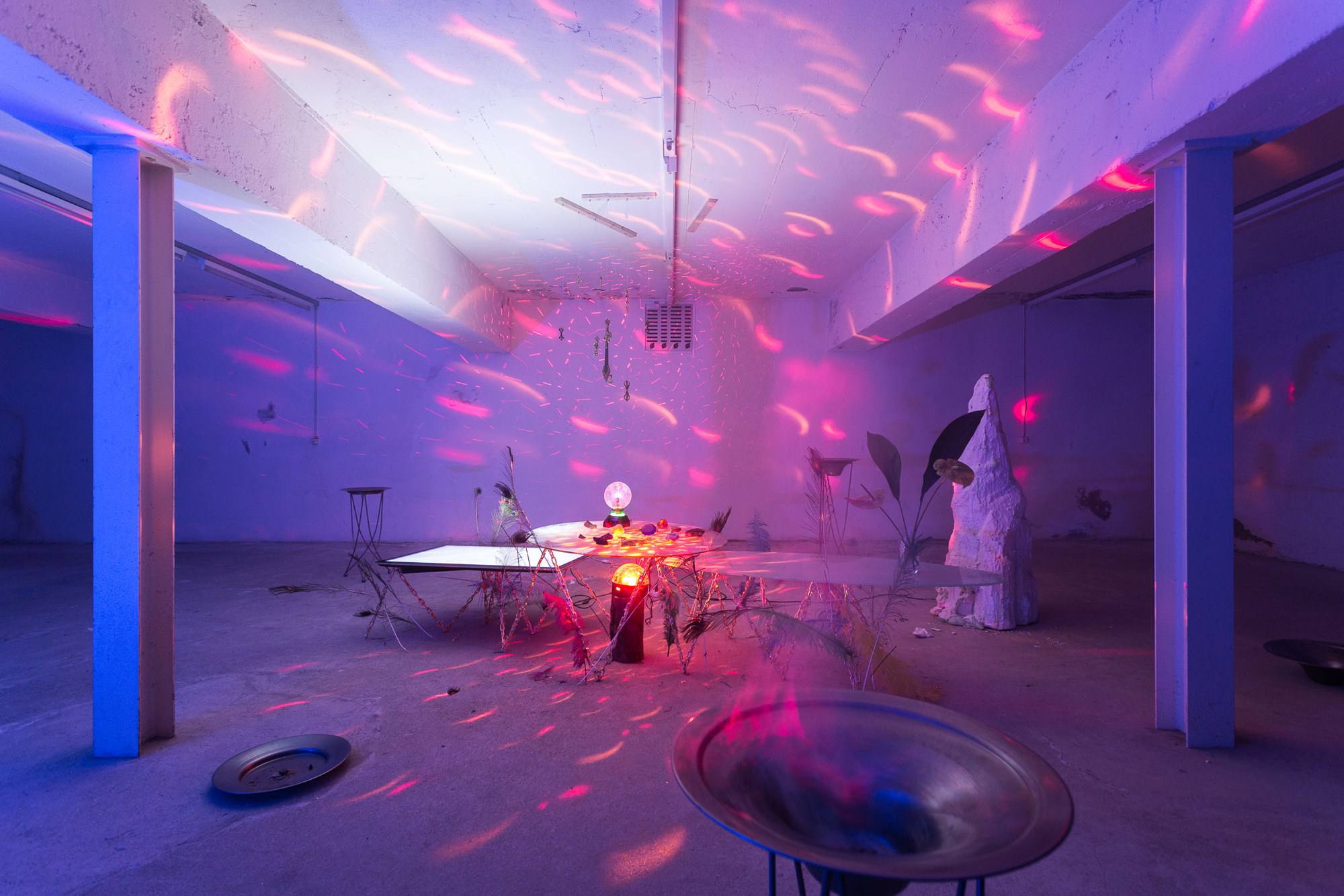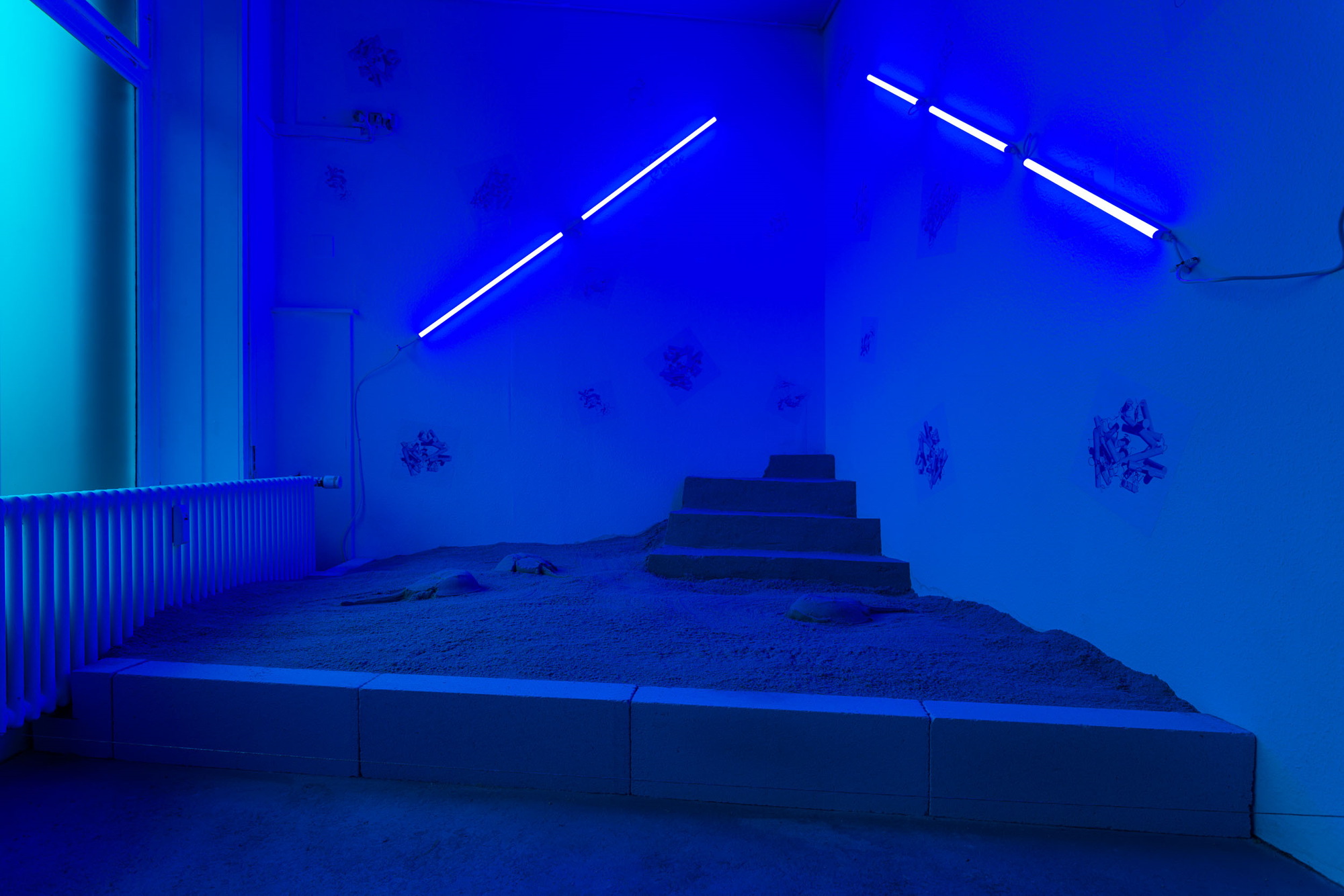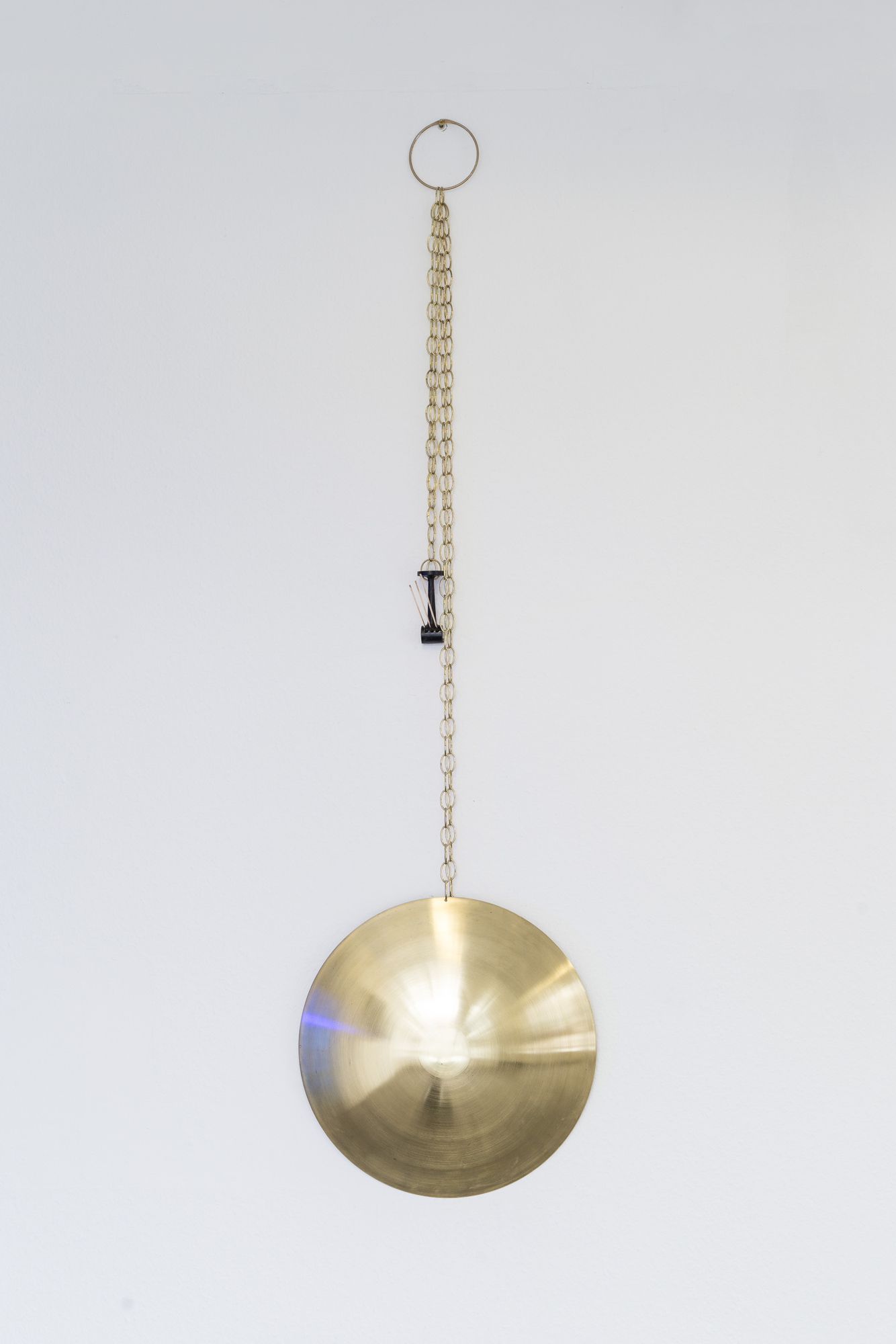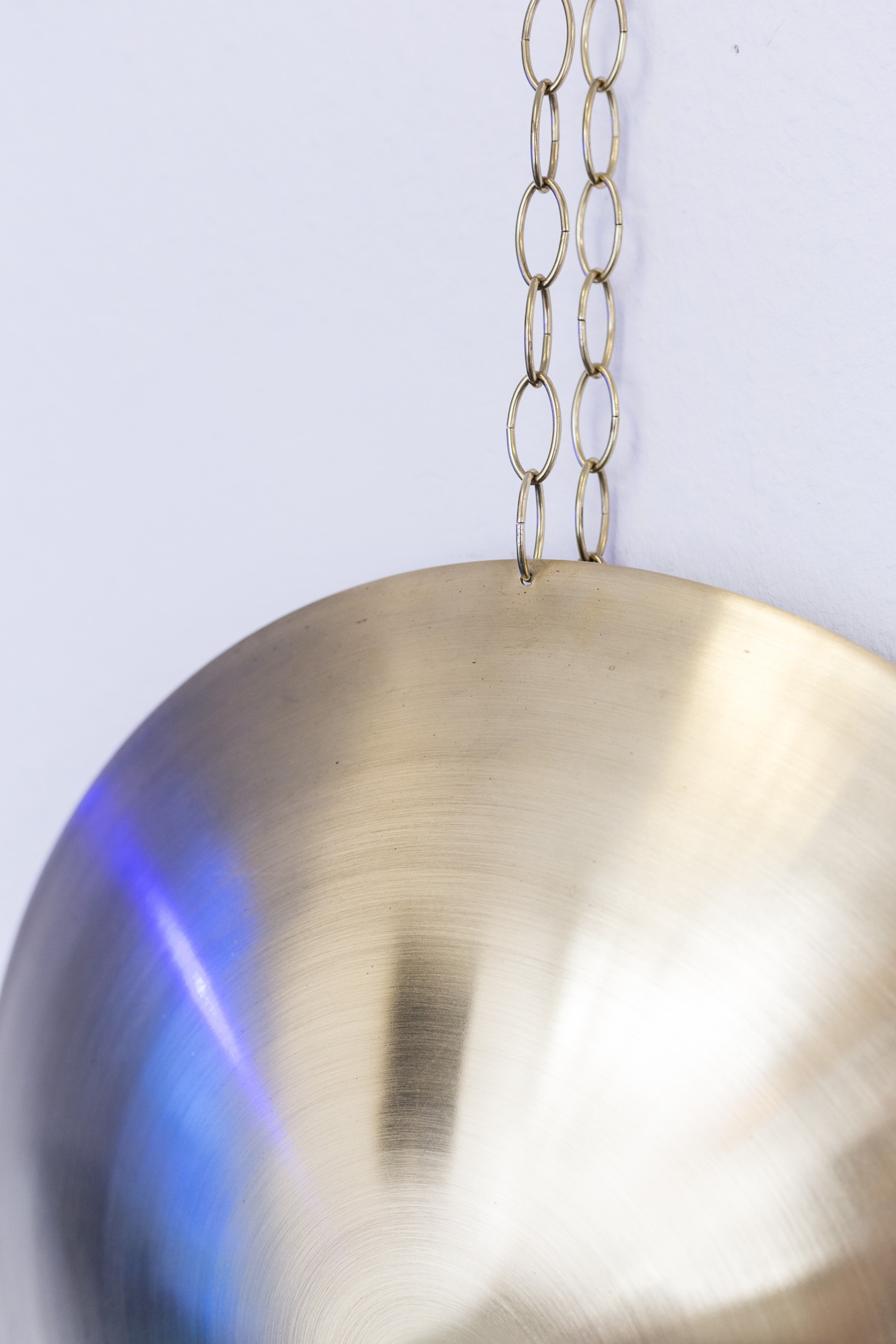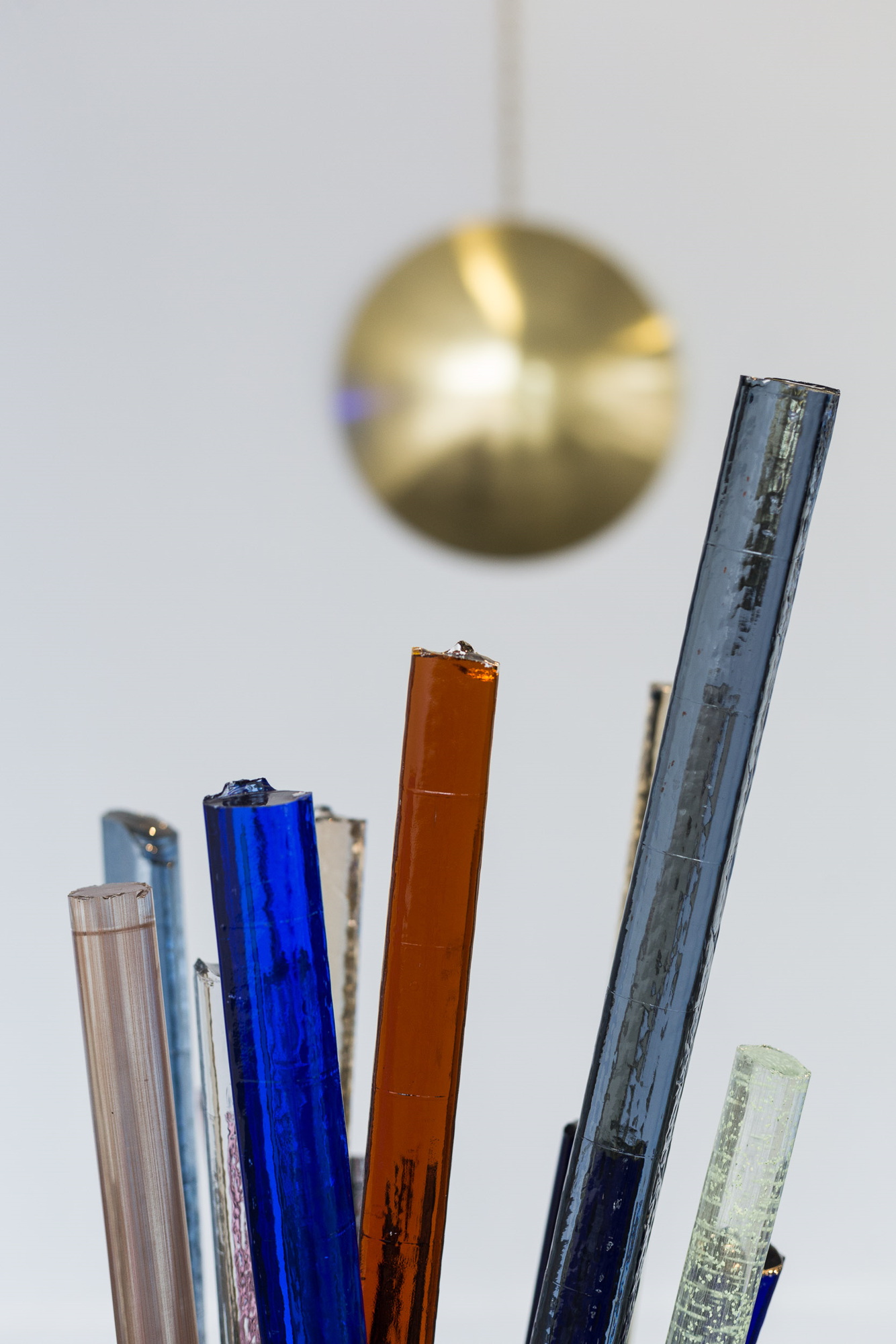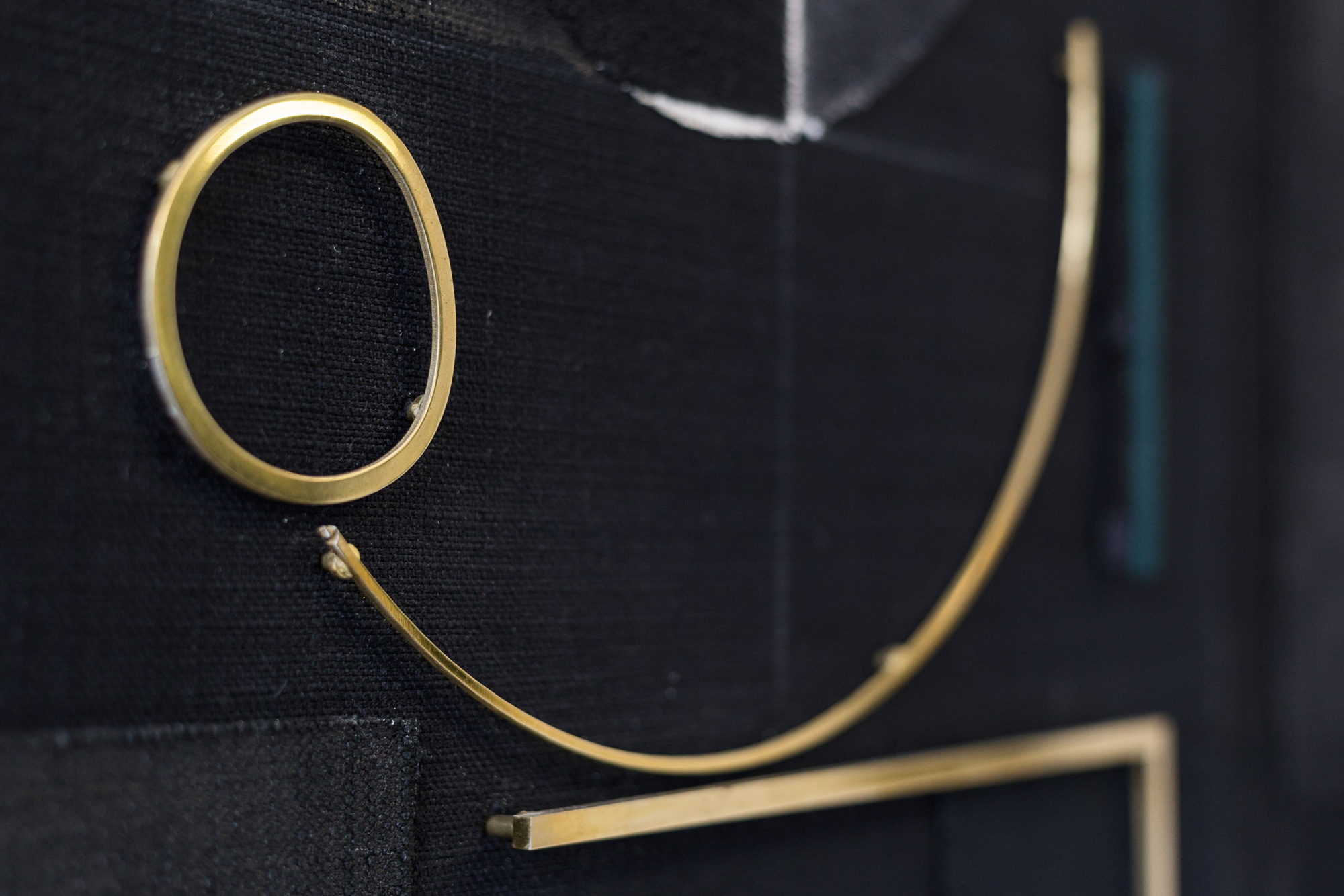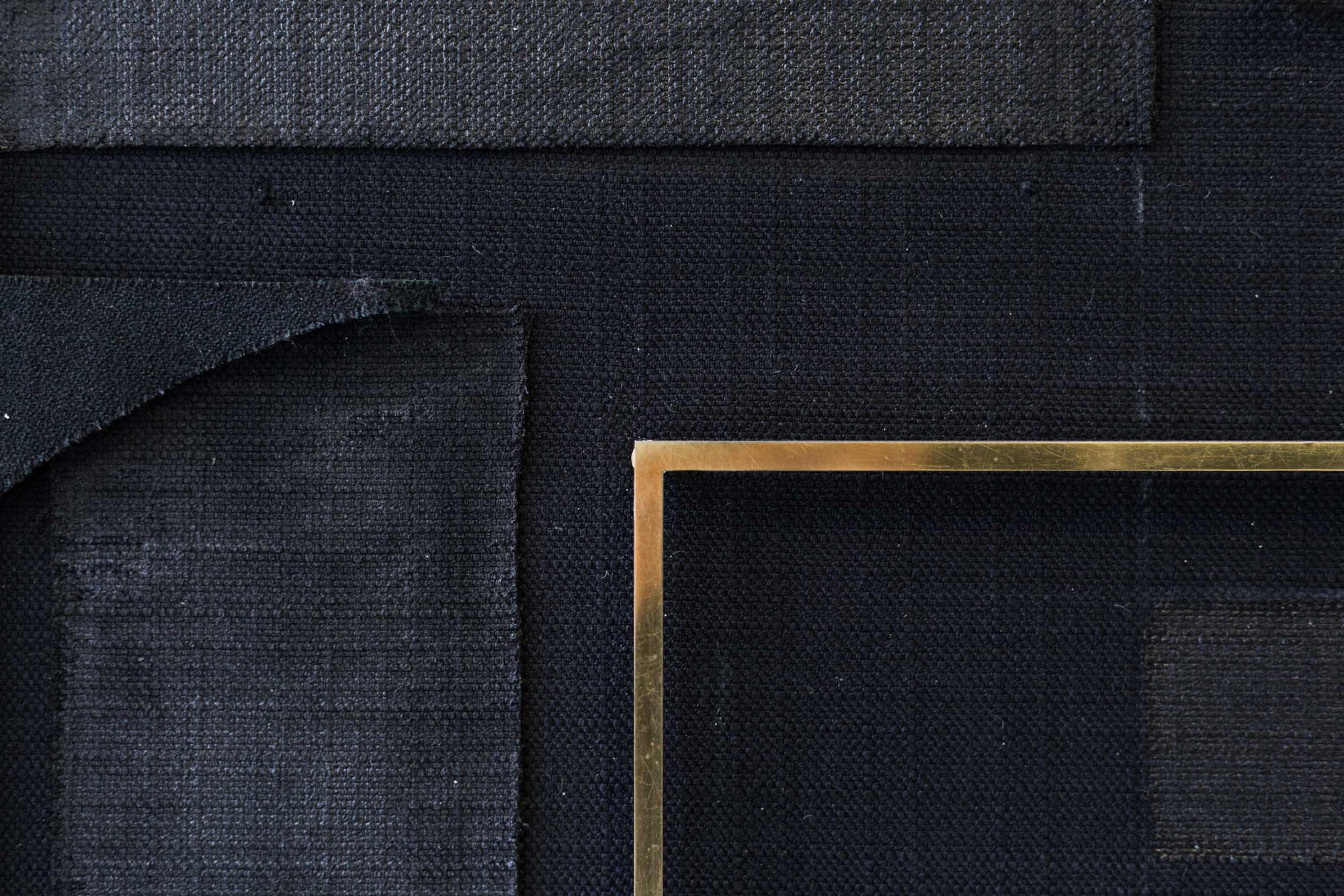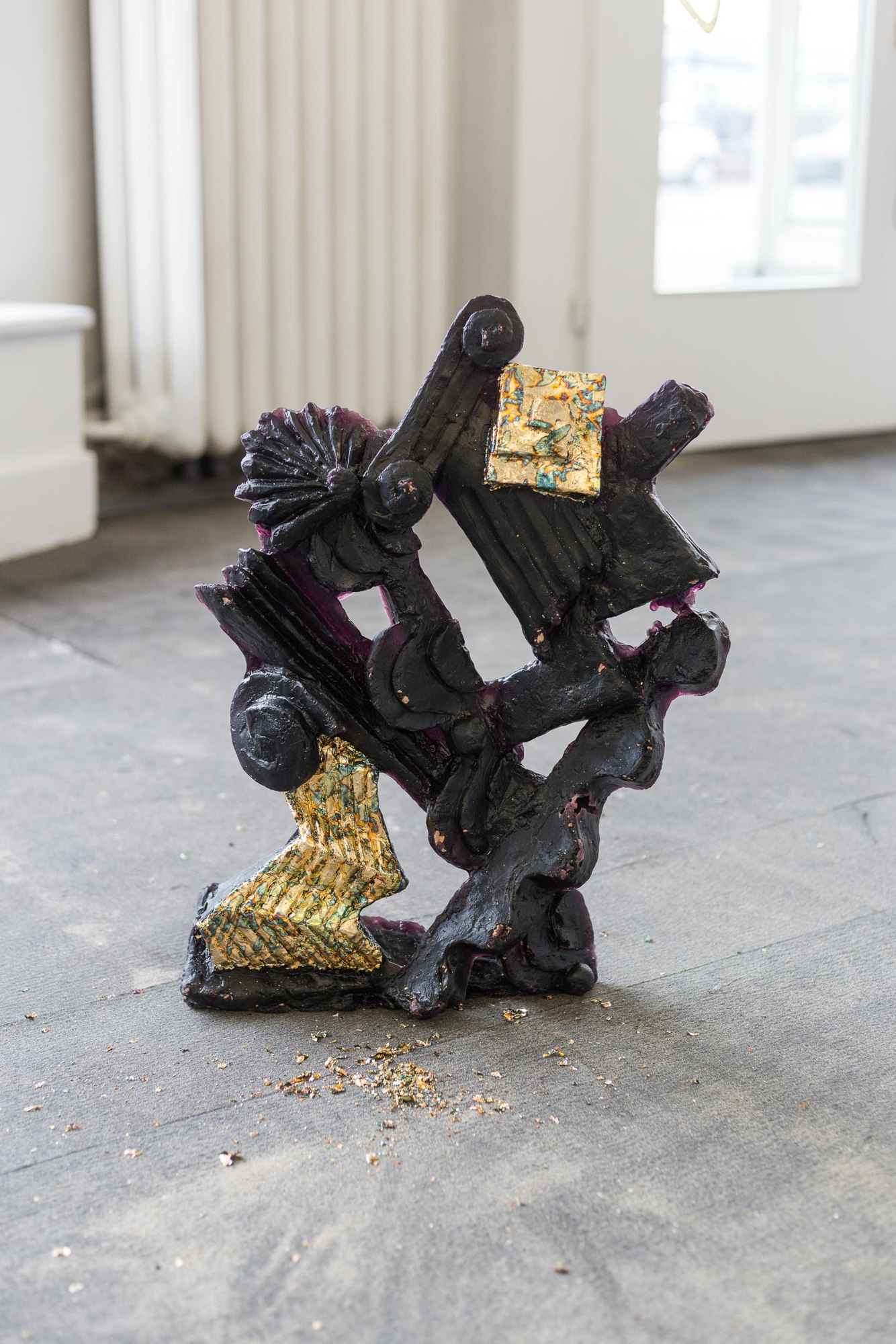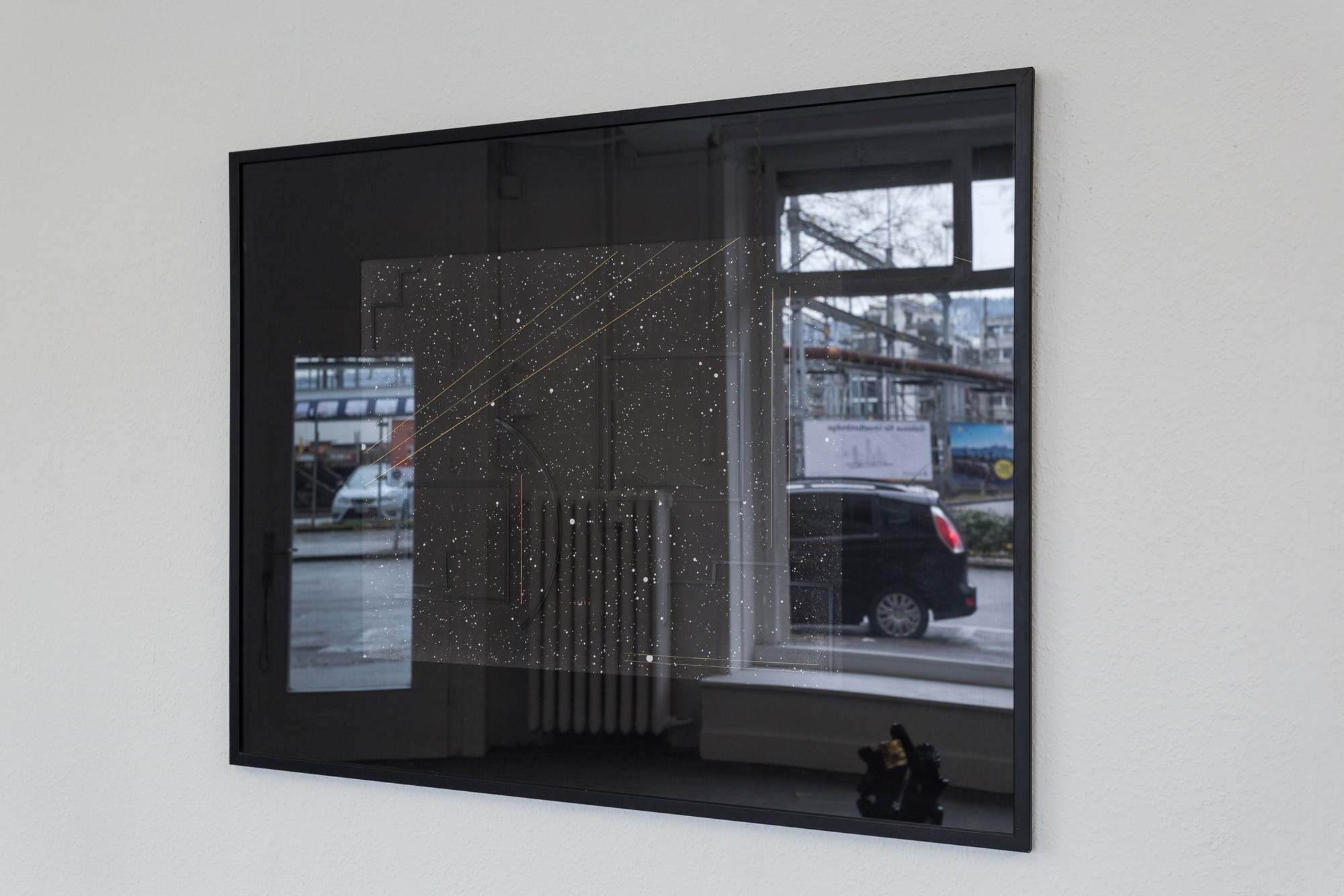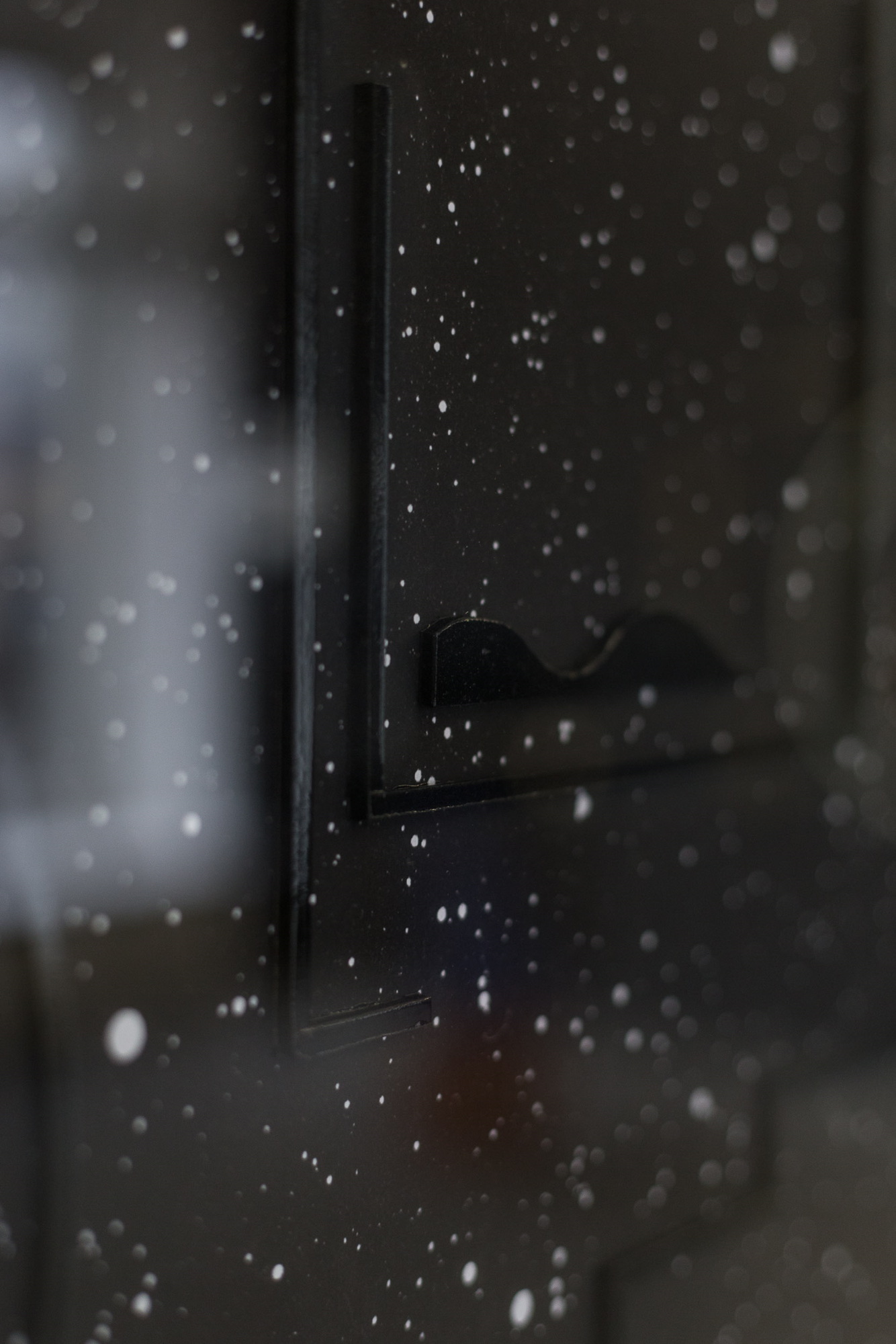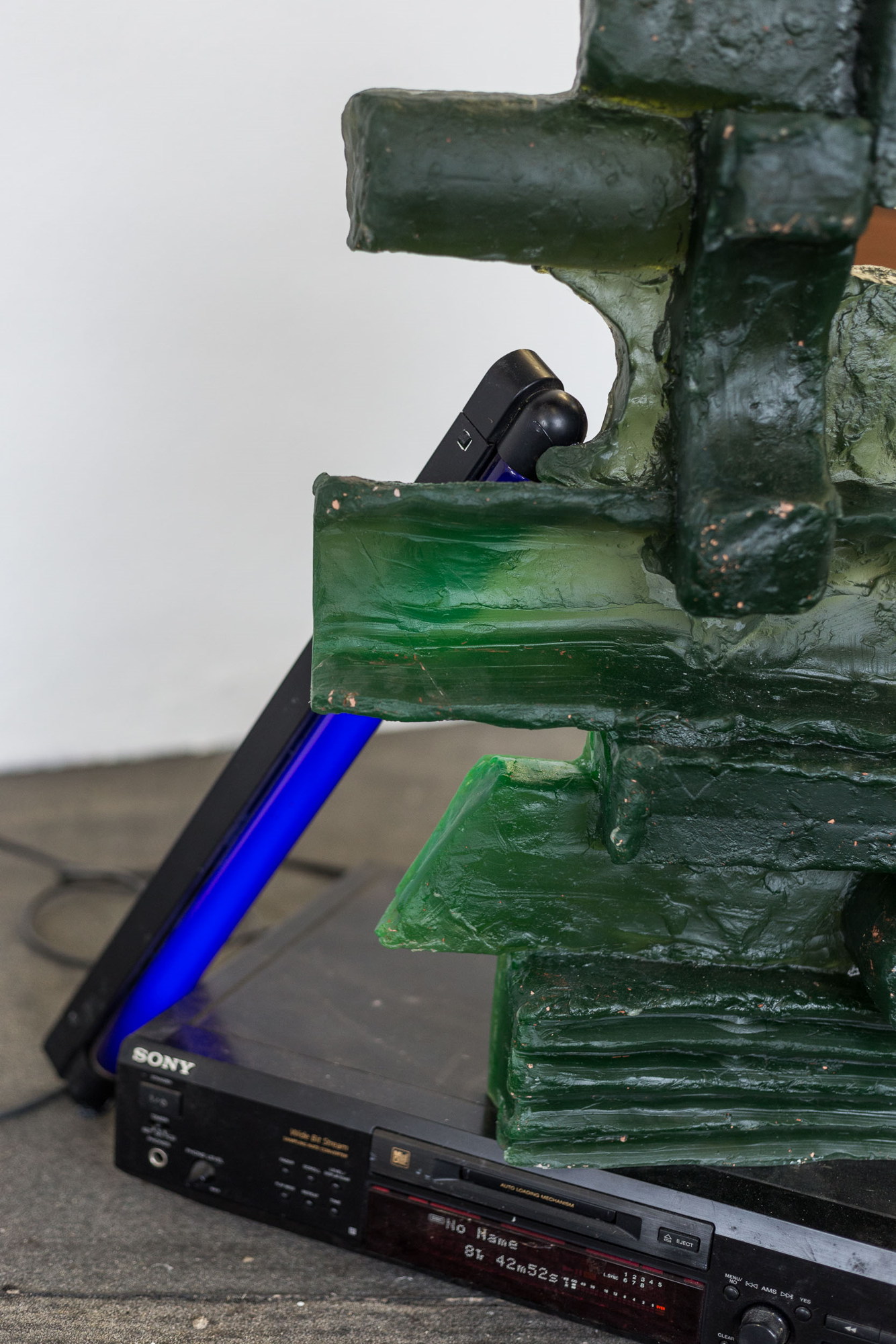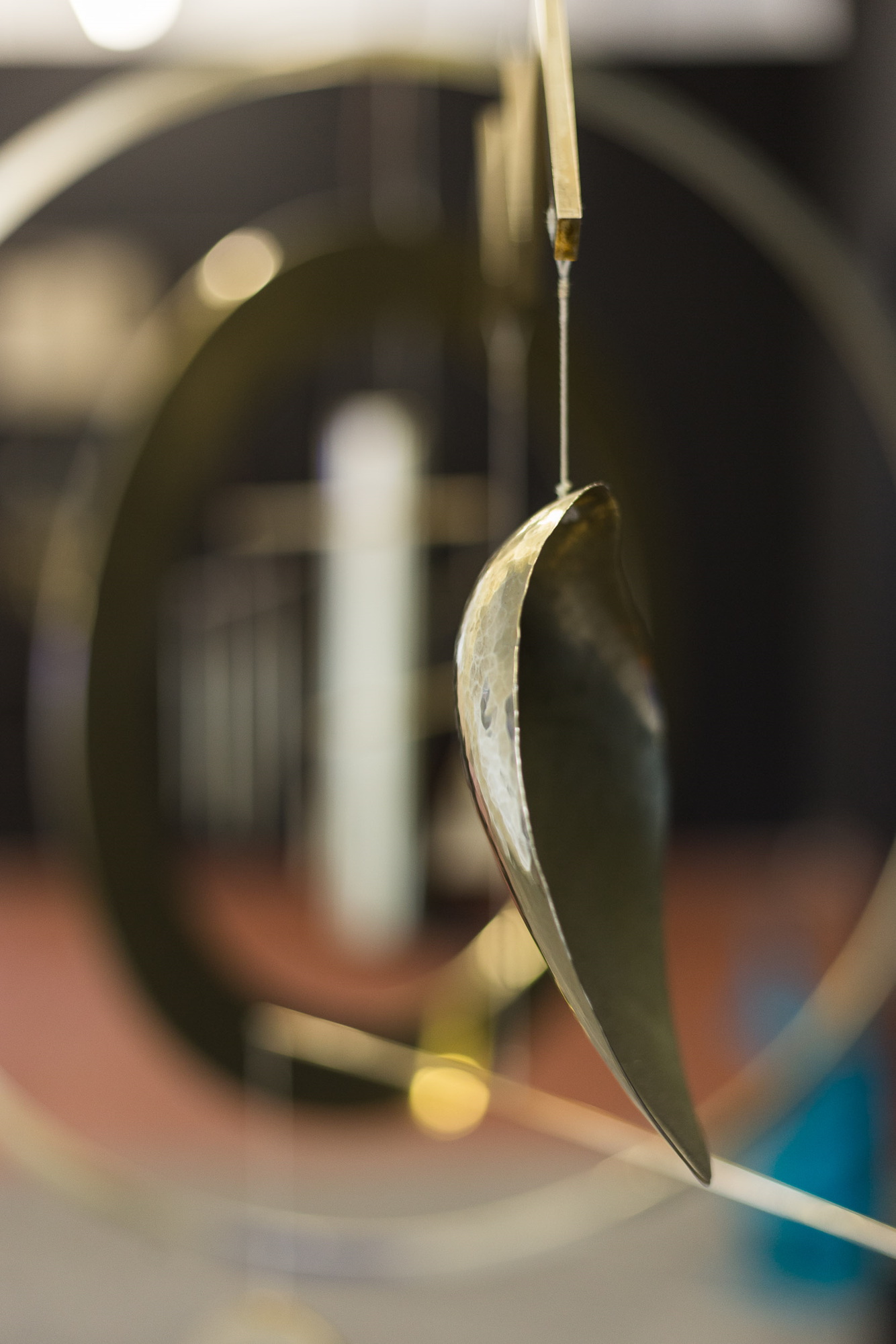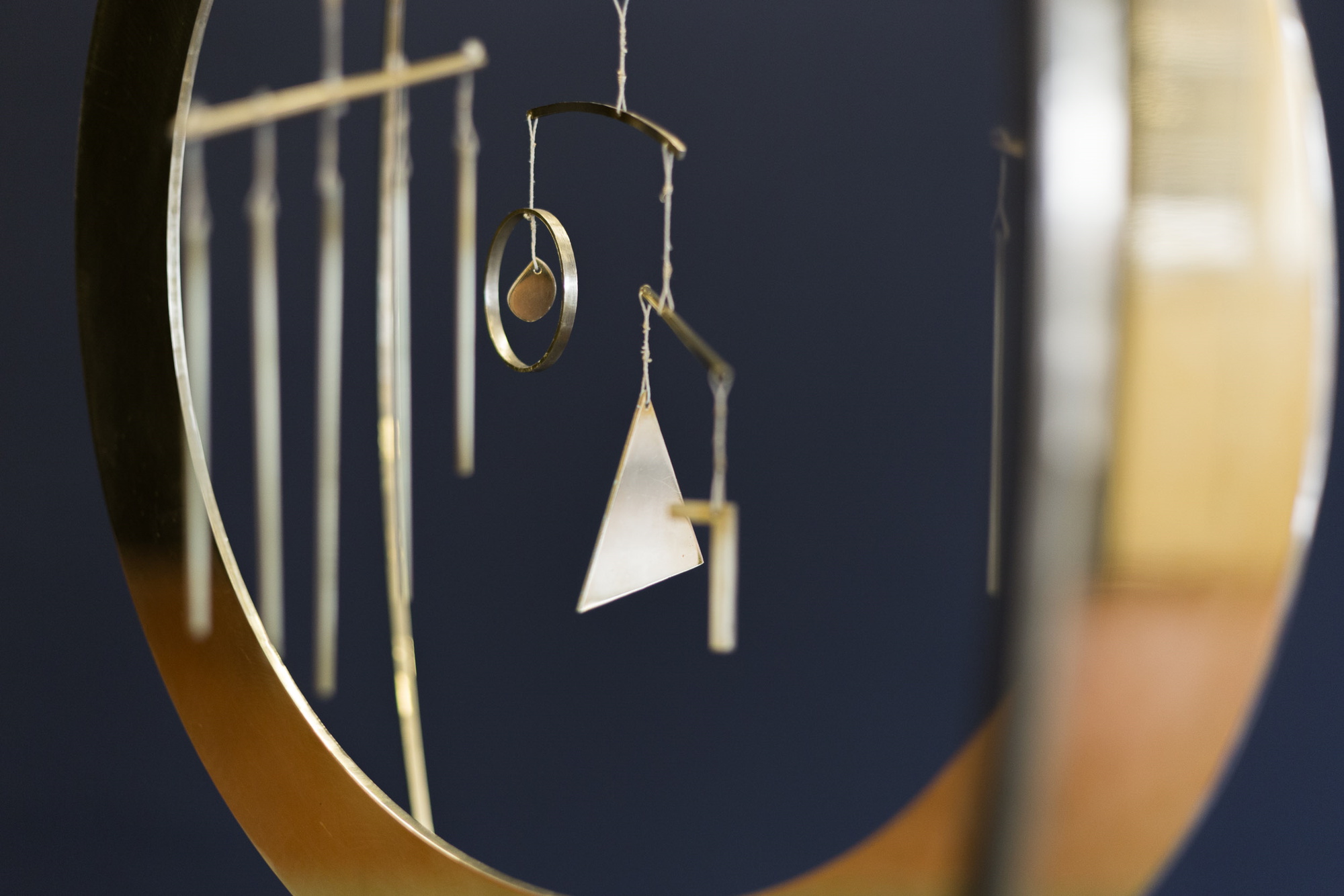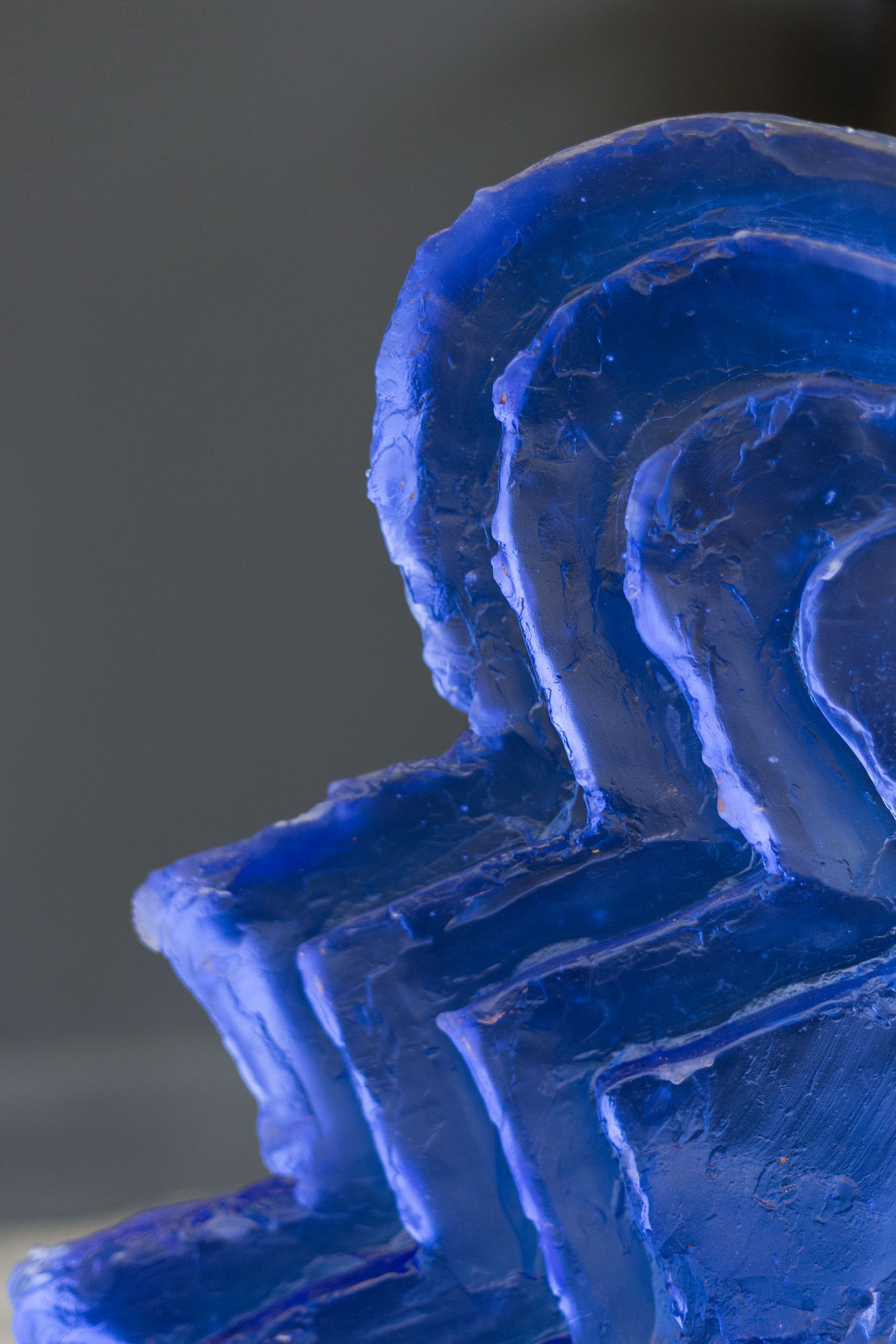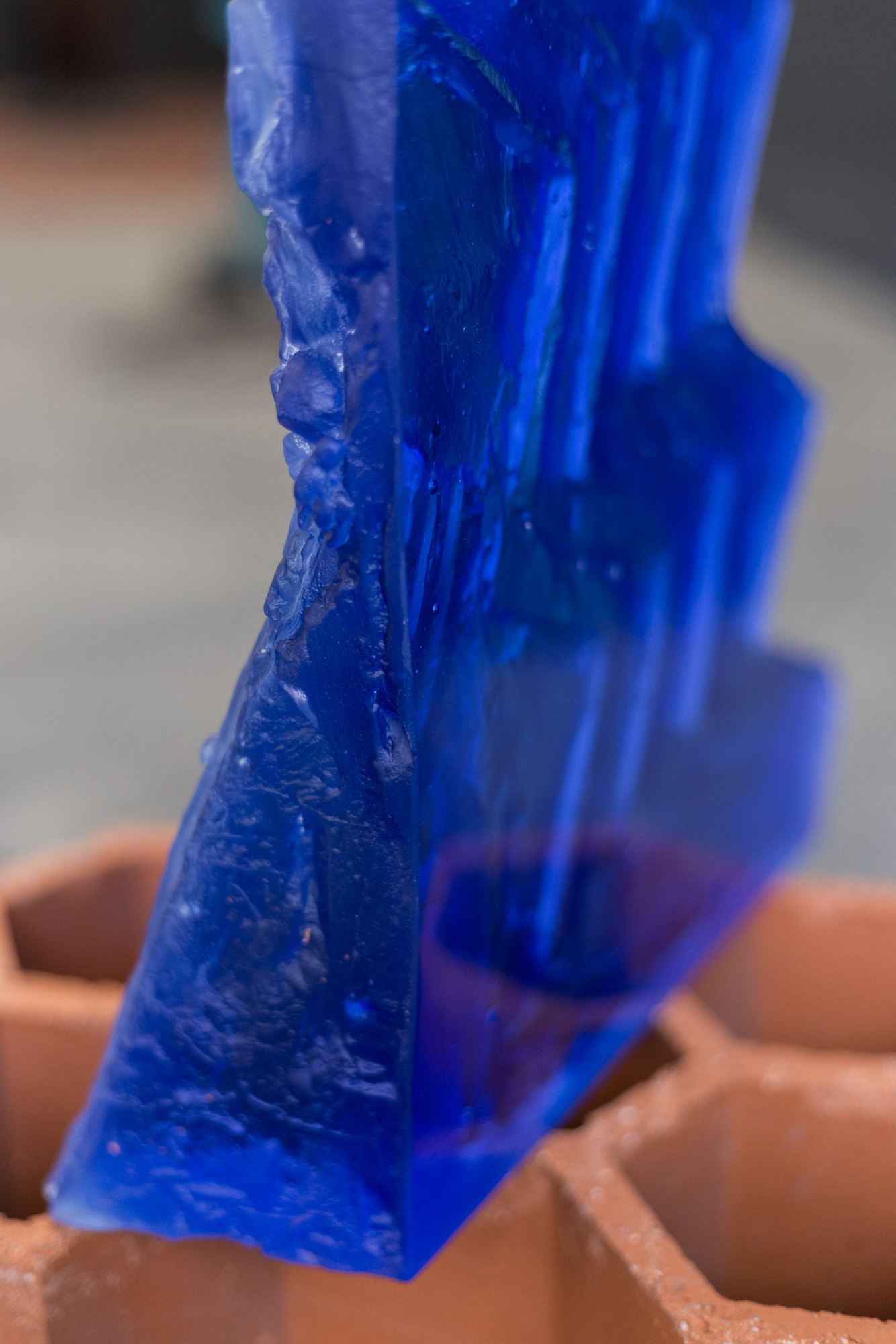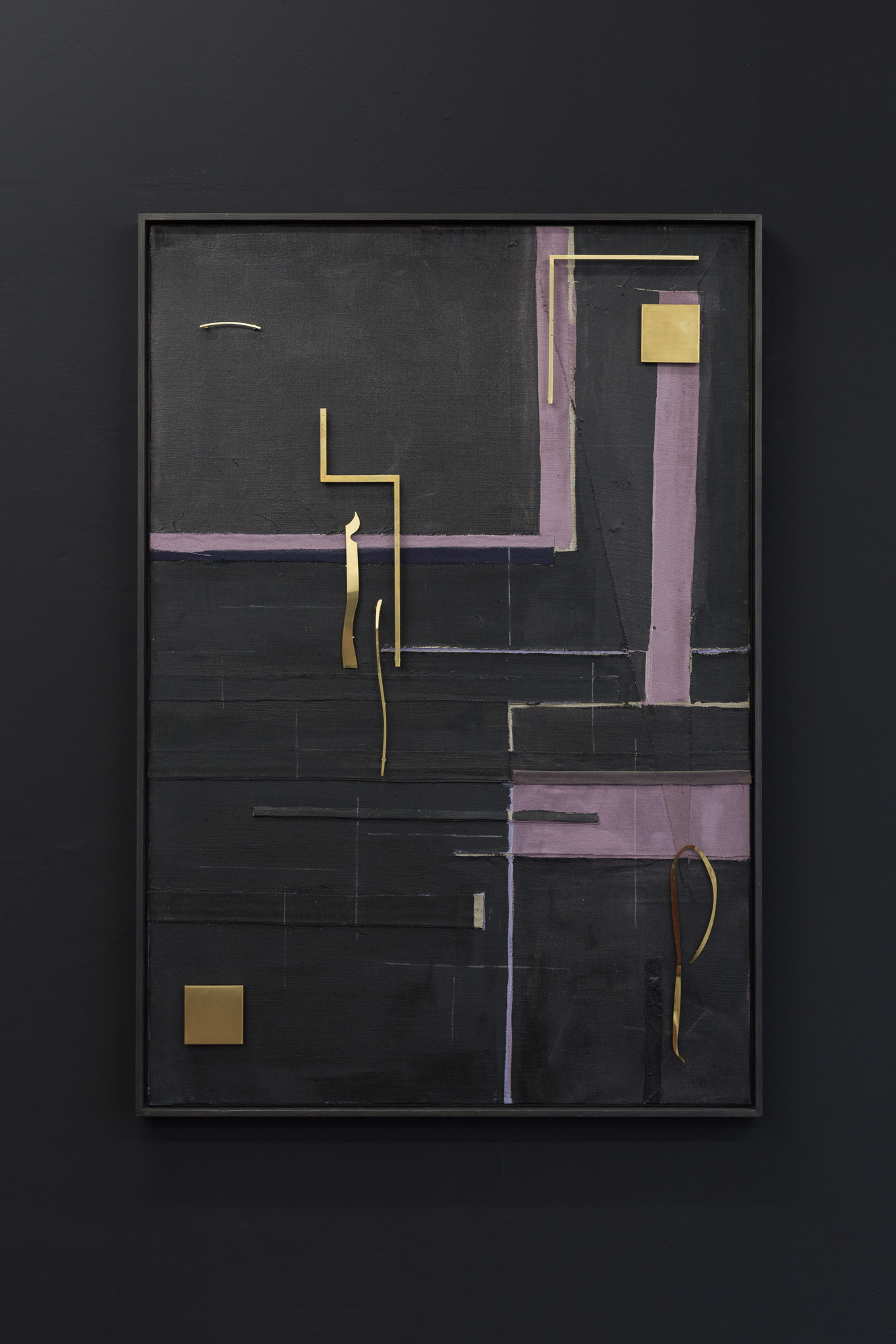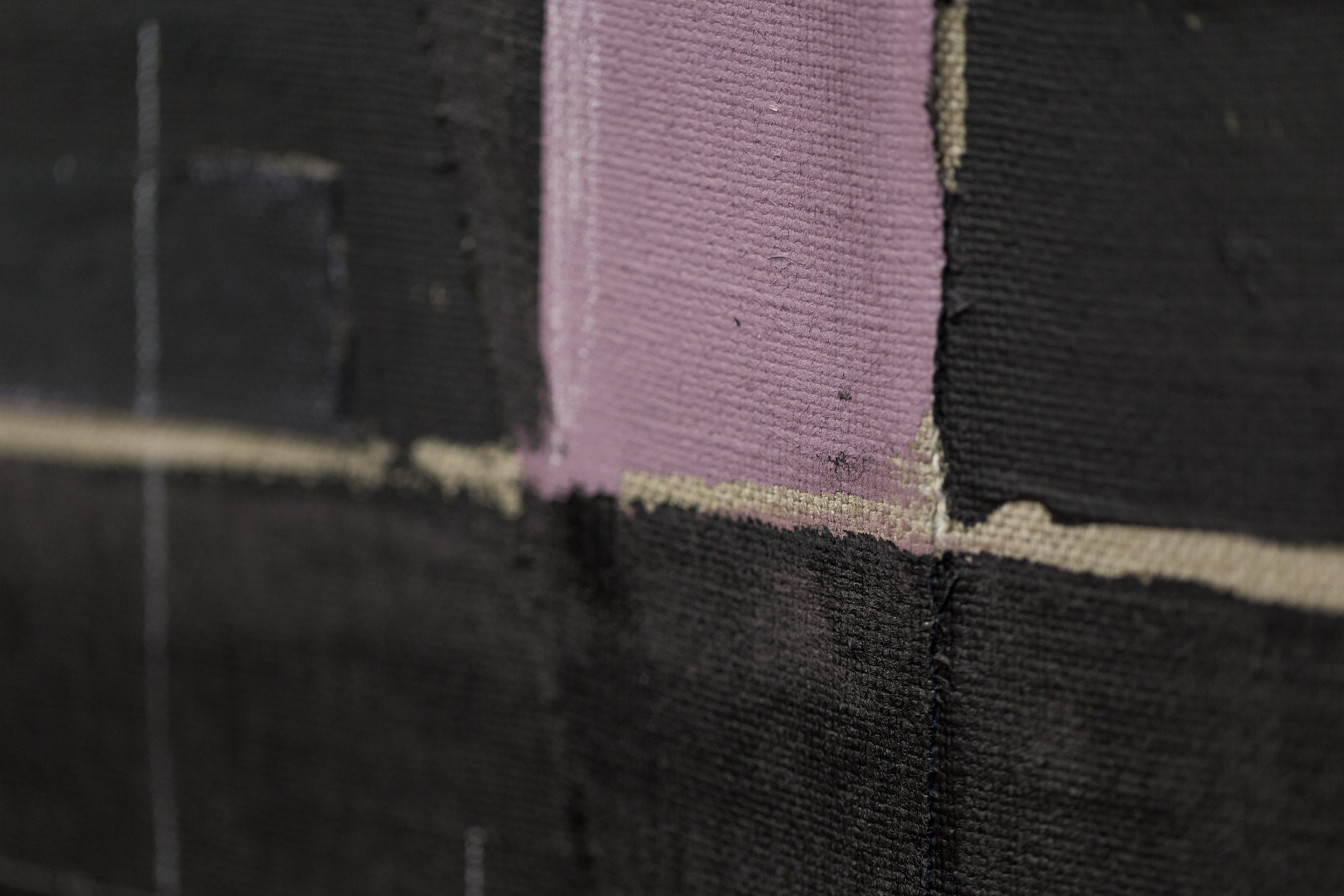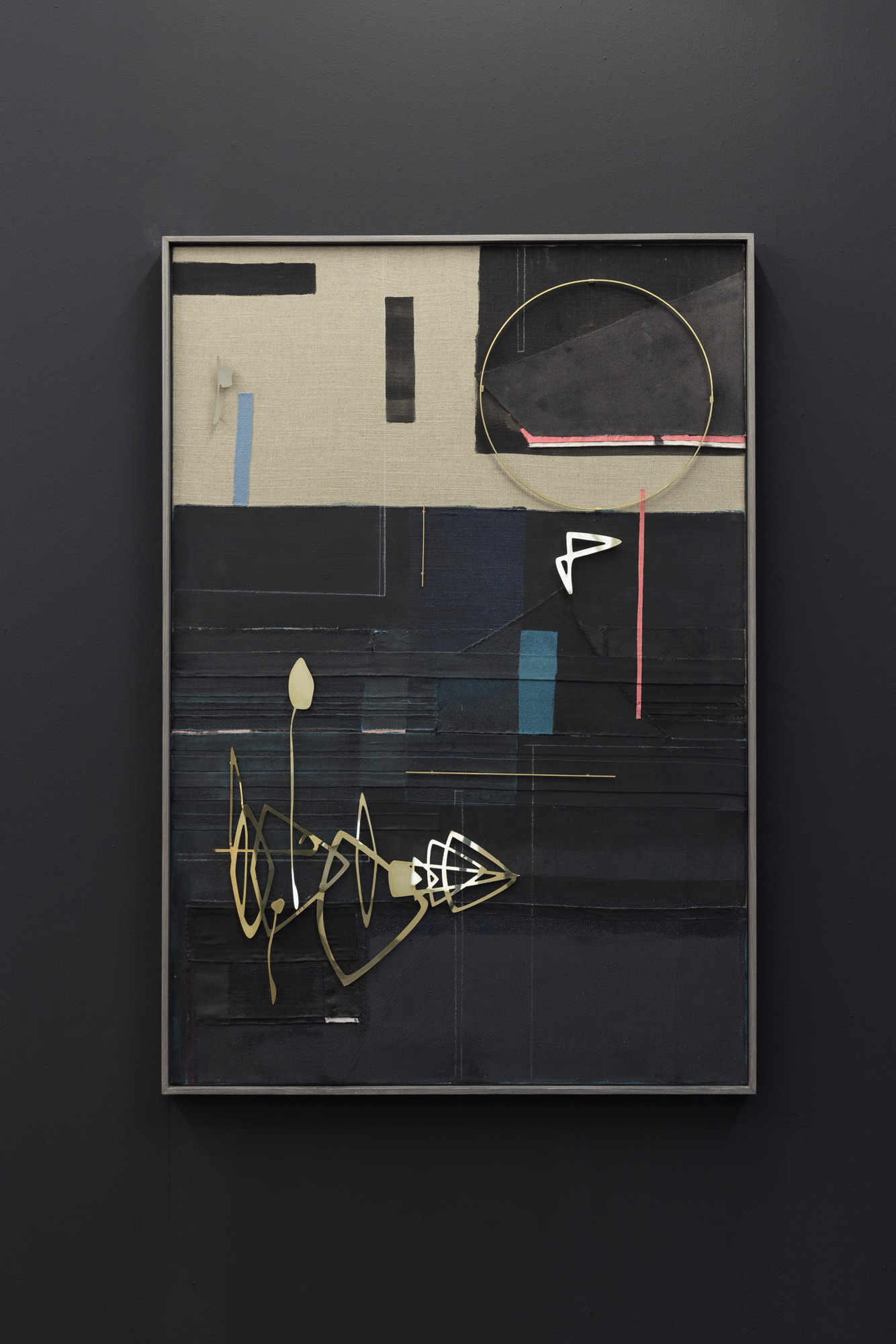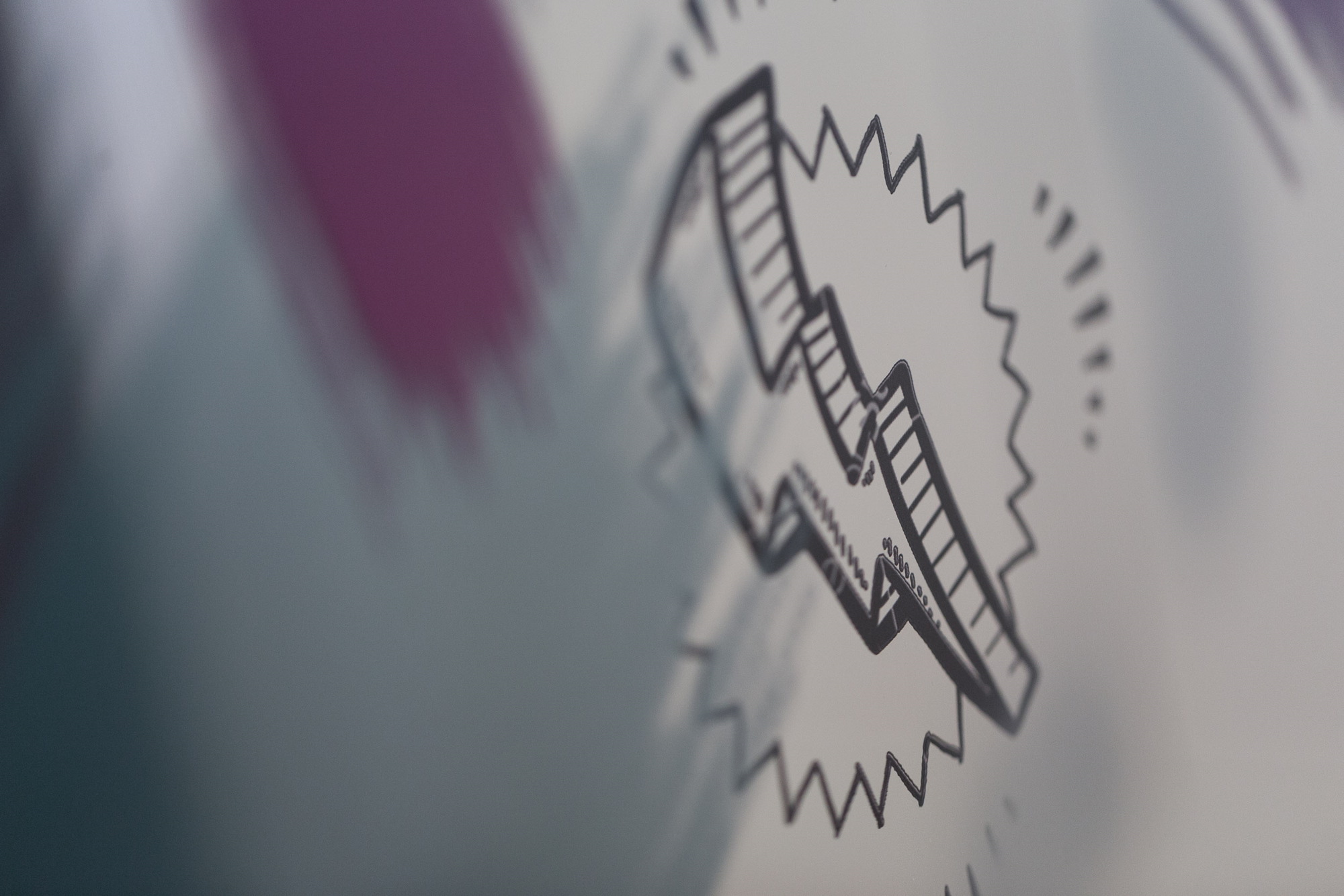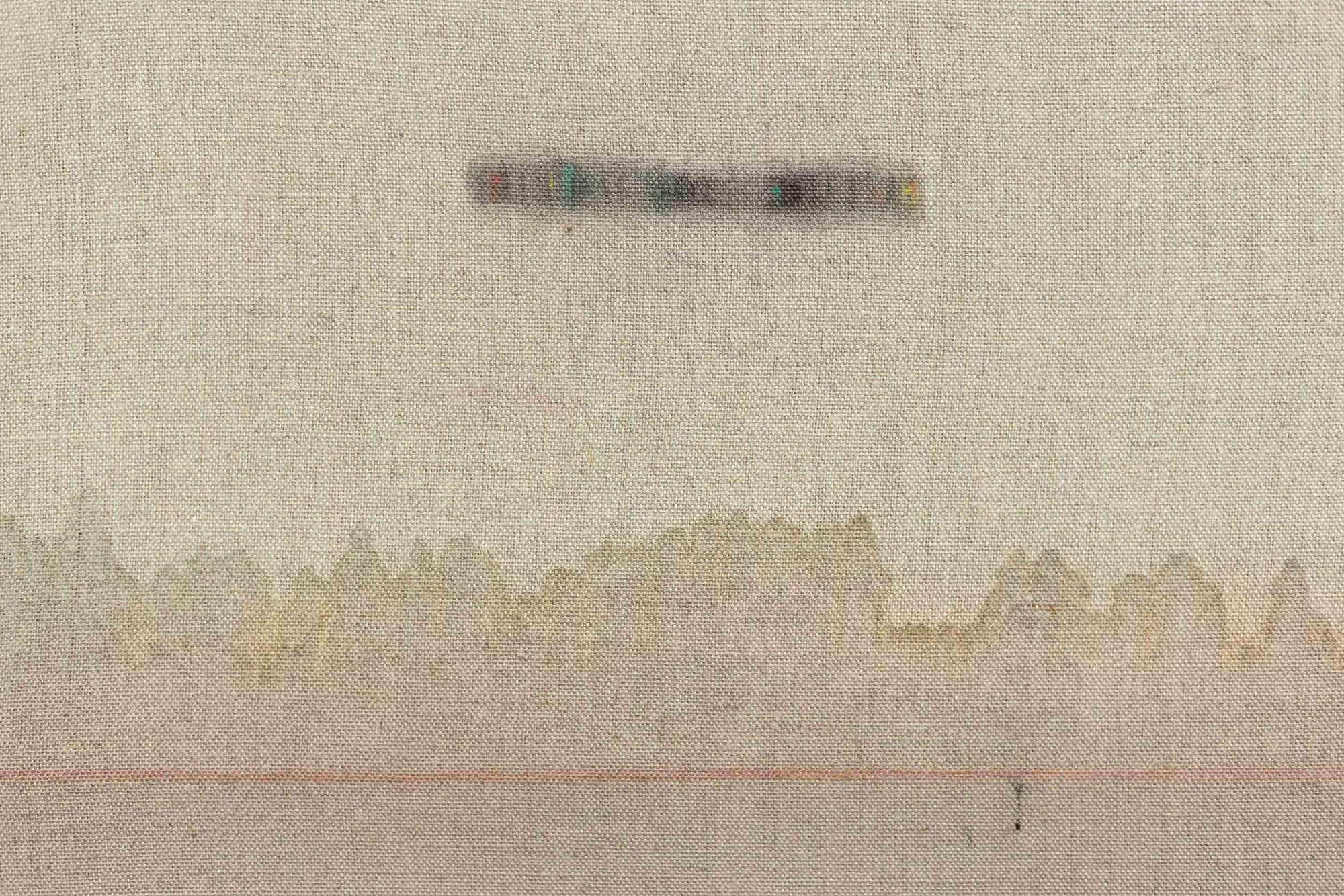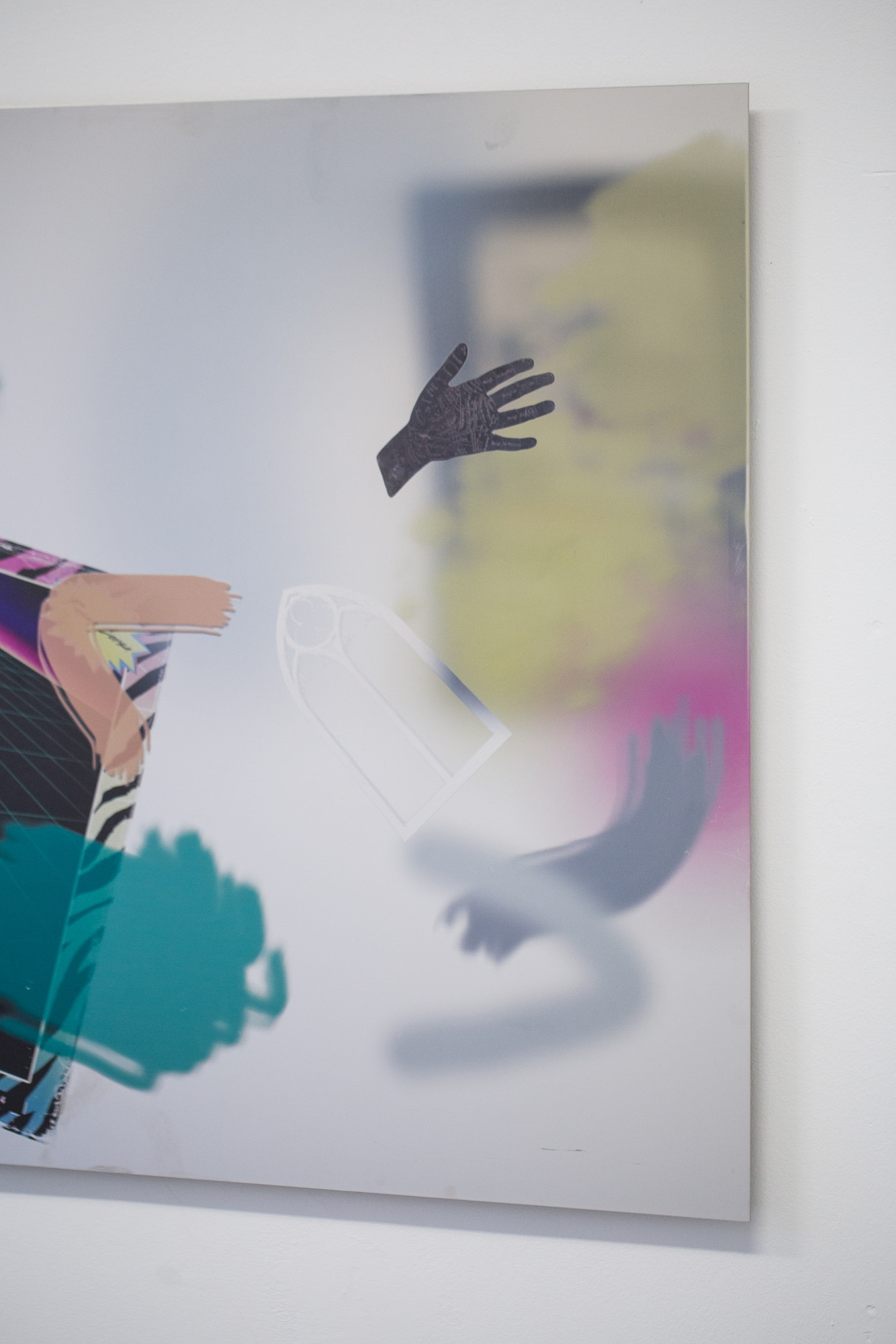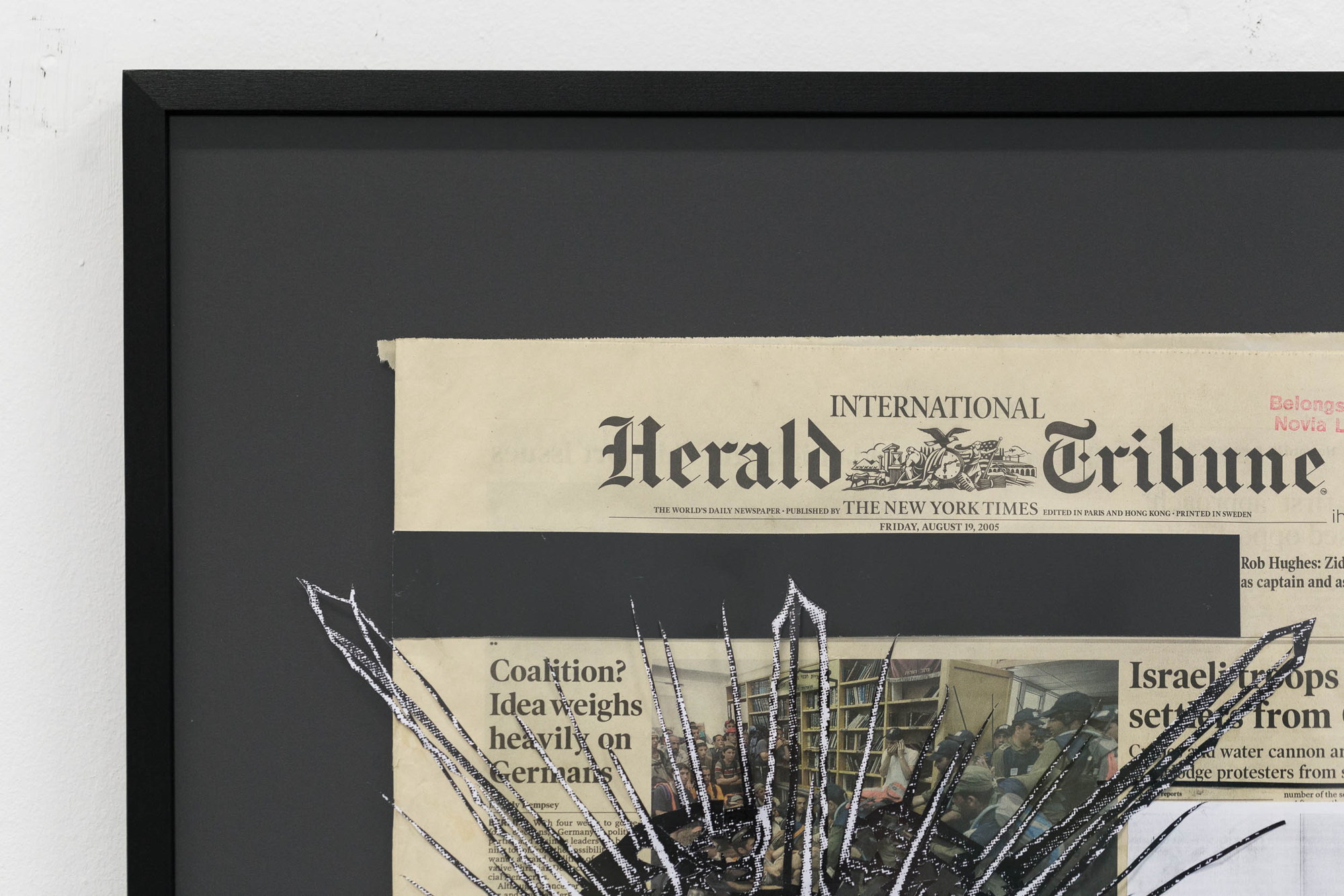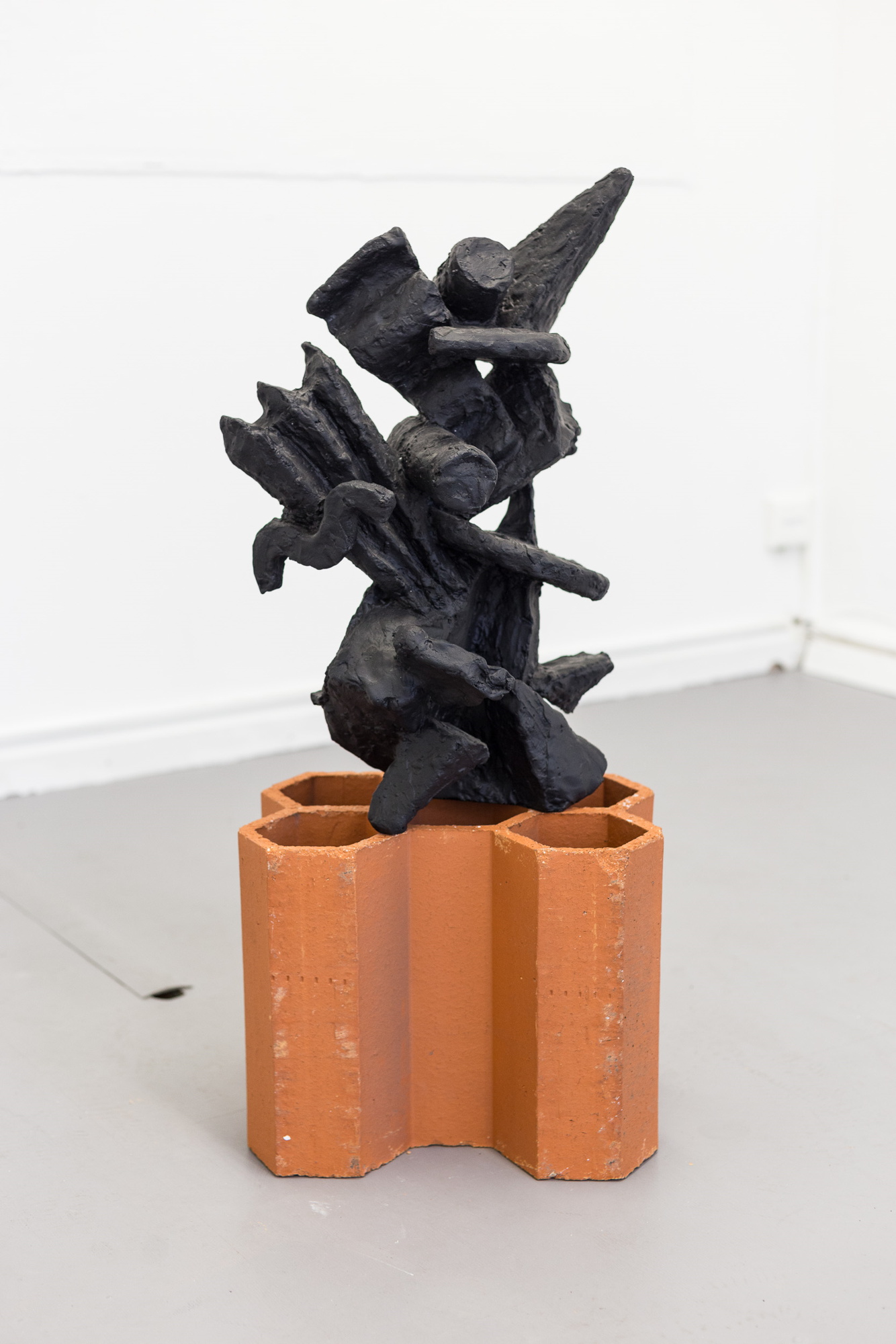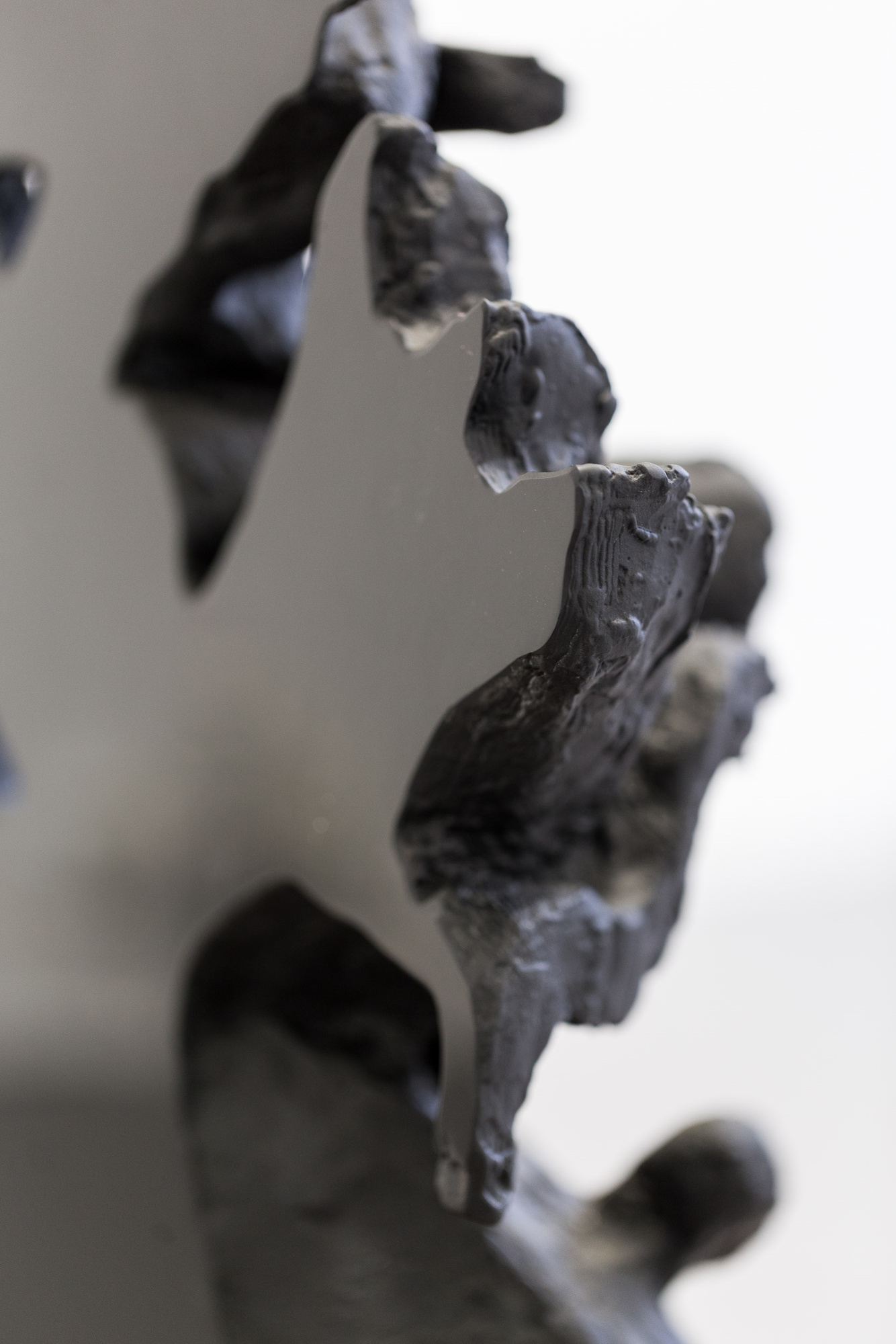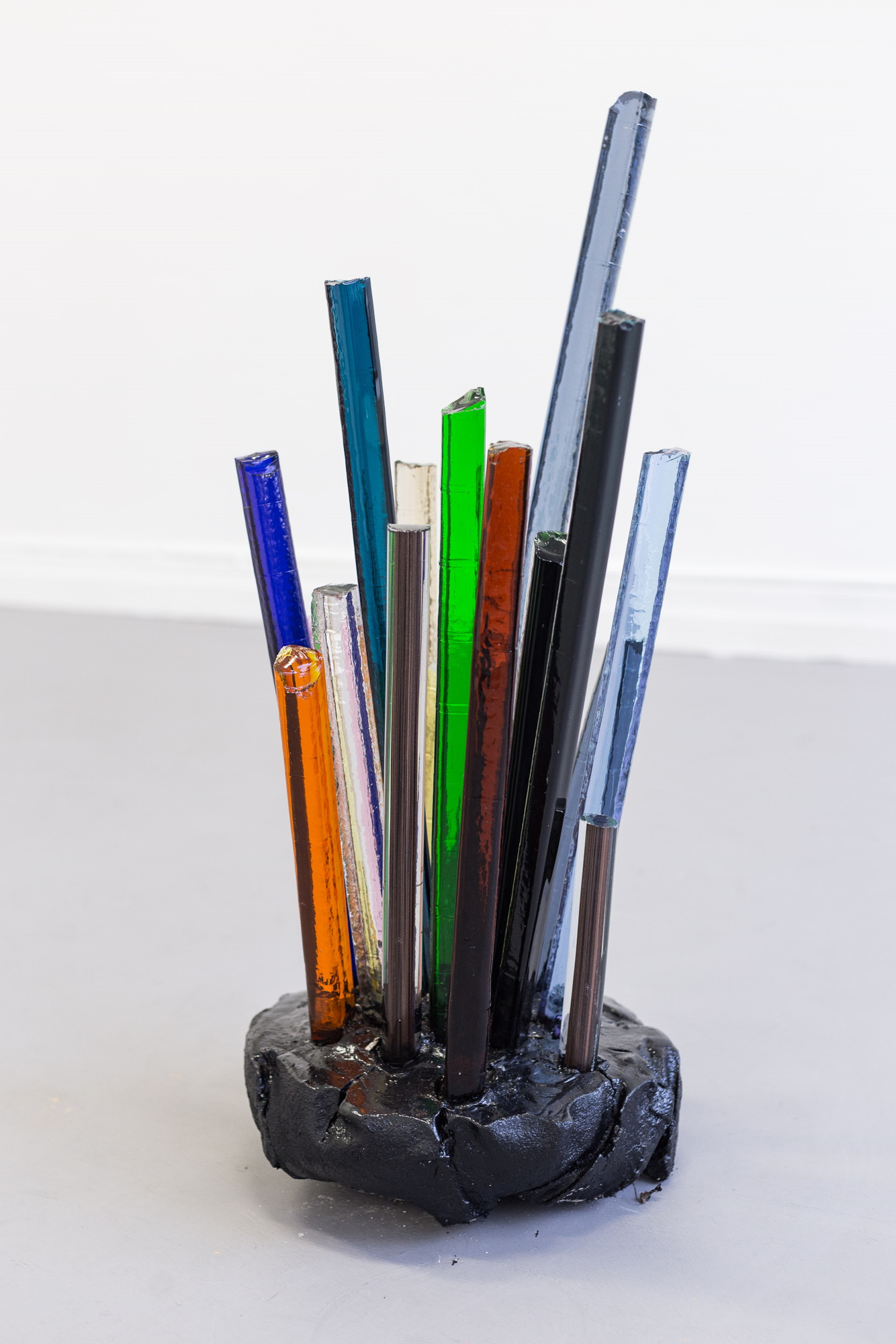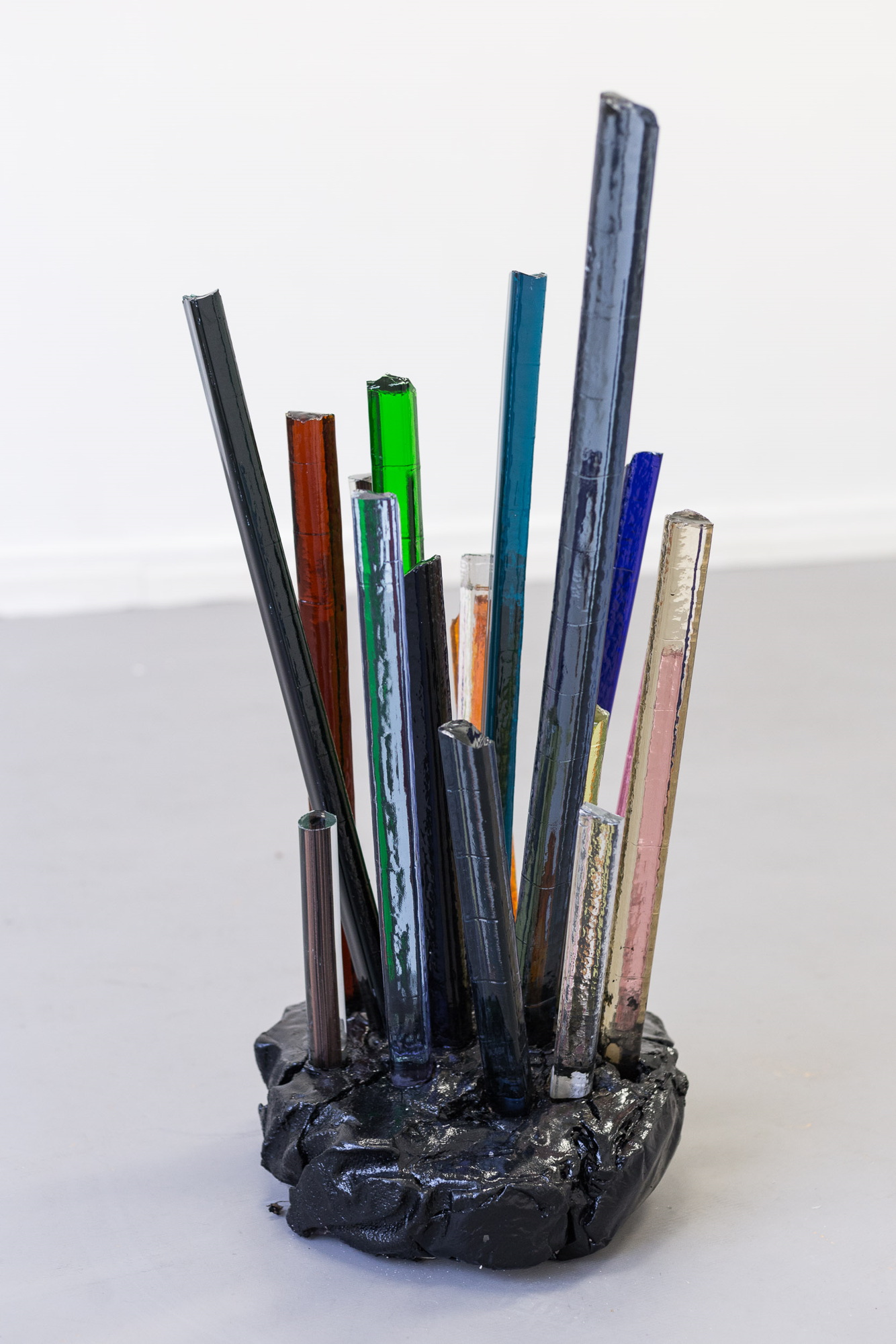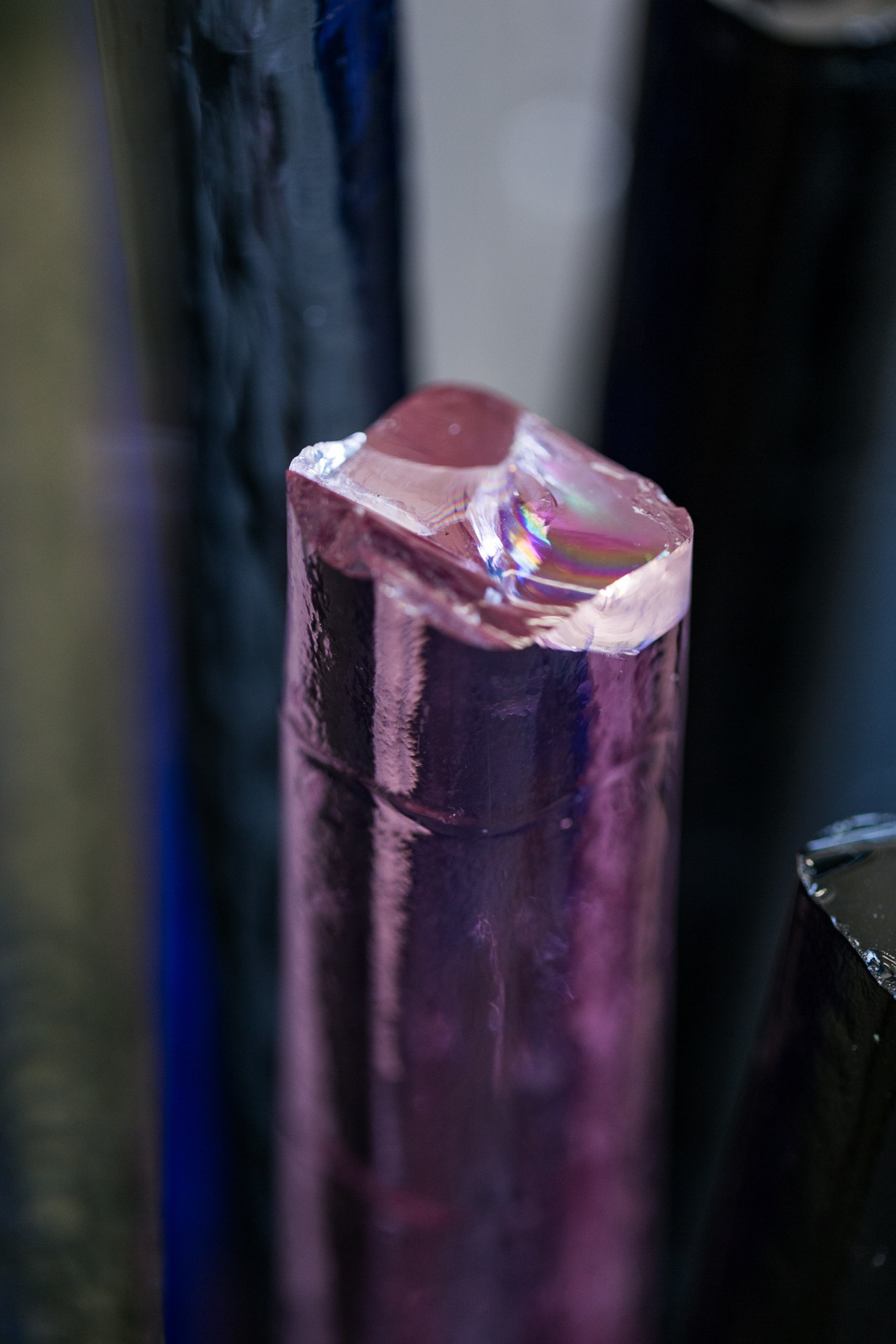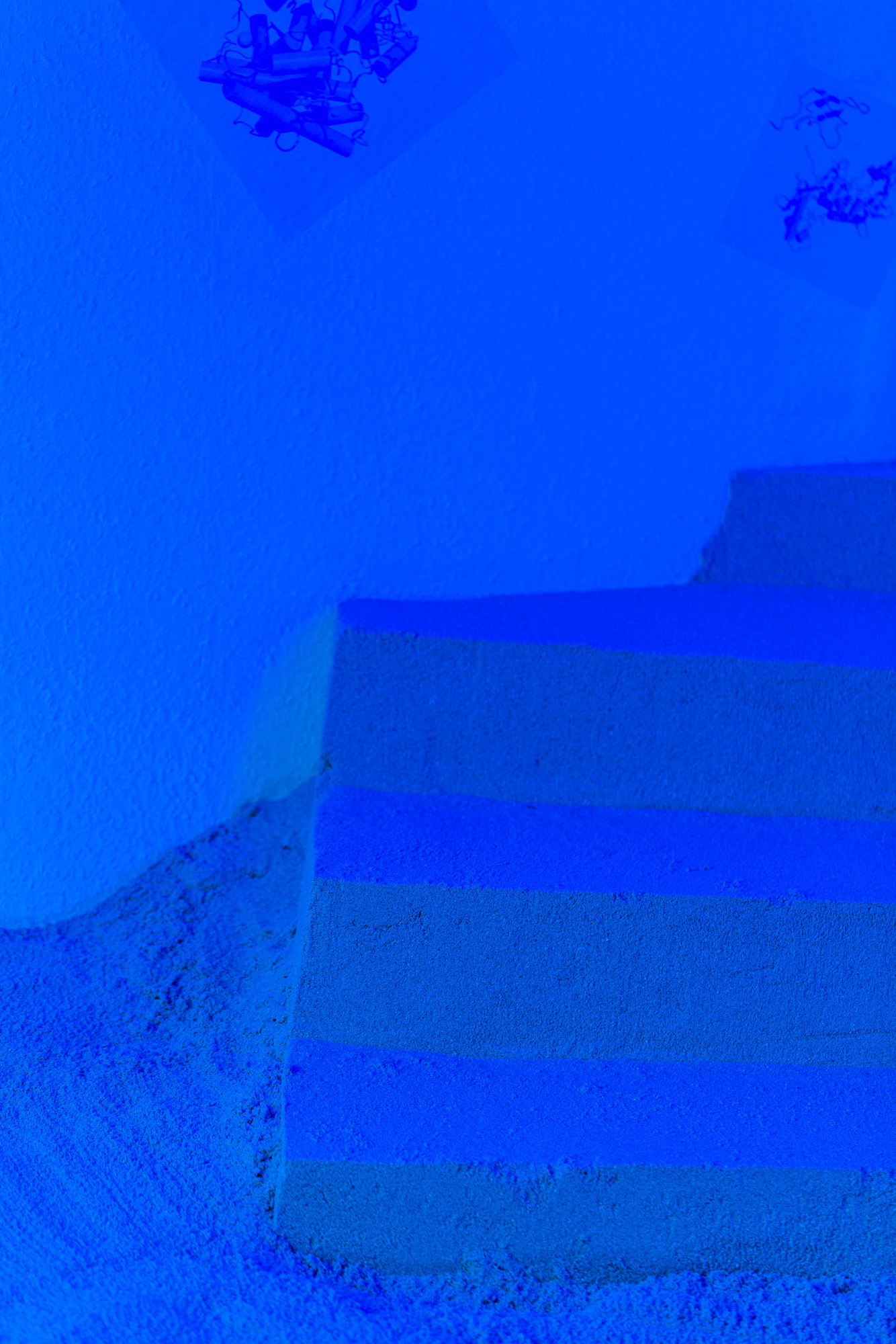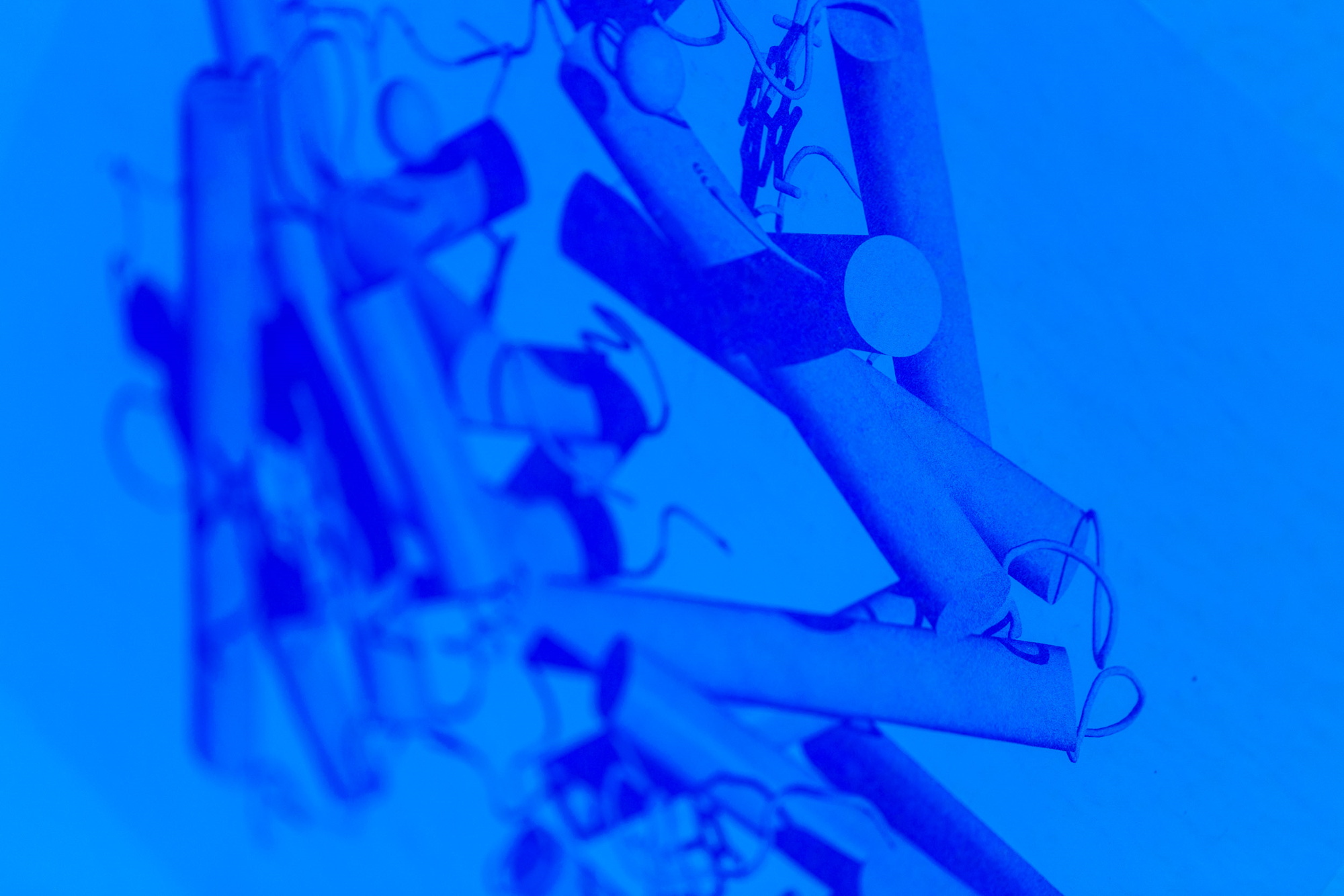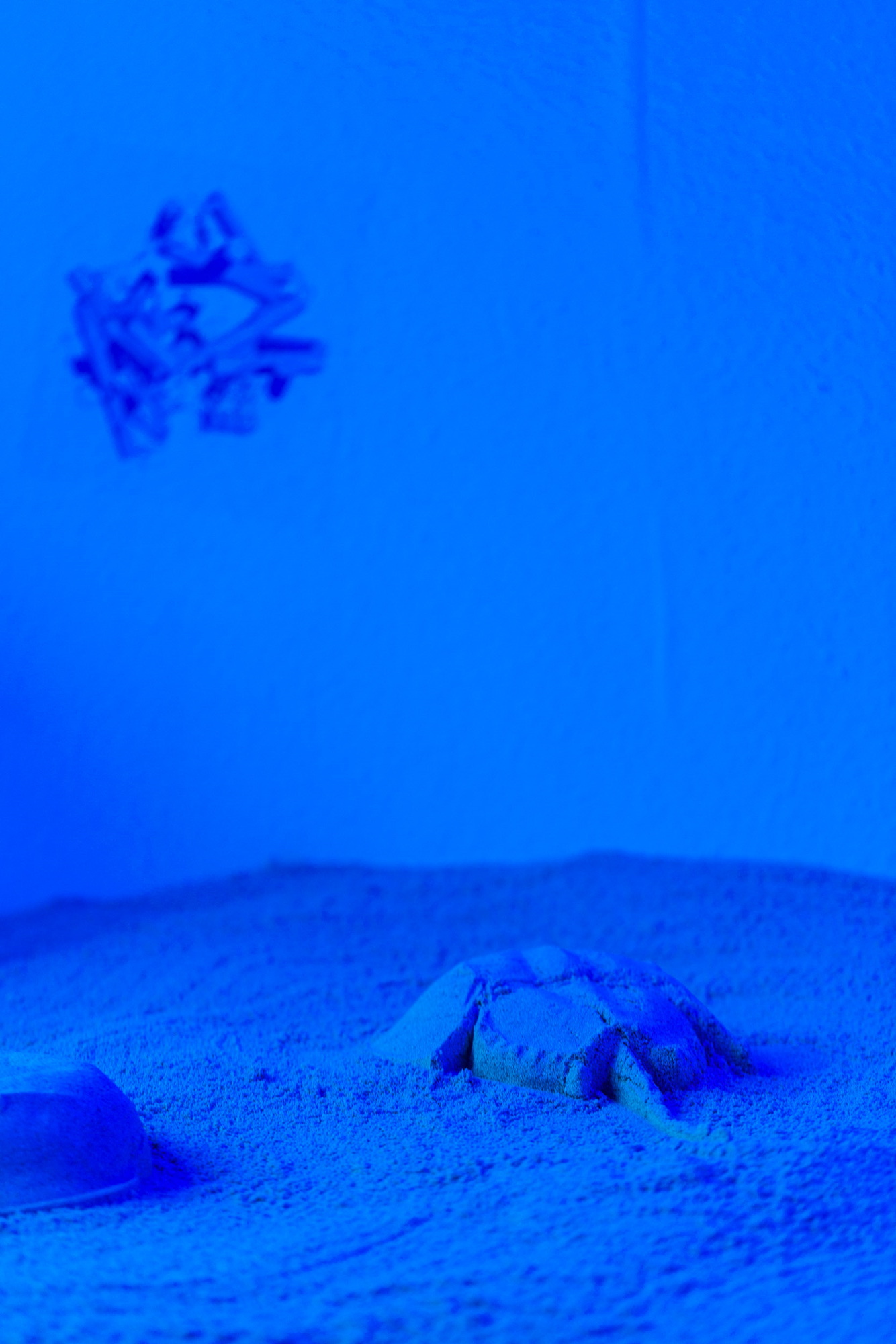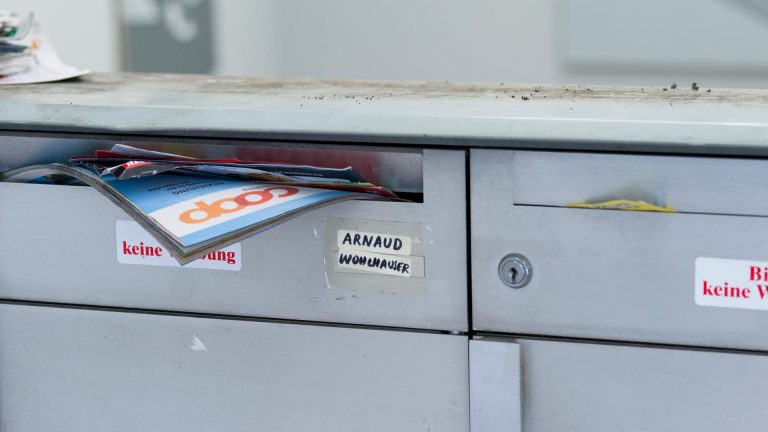Artists: Kirstine Roepstorff, Matyás Chochola, Nadim Abbas
Venue: Last Tango, Zürich, Switzerland
Date: December 8, 2017 – January 27, 2018
Photography: Kilian Bannwart / all images copyright and courtesy of the artists and Last Tango, Zürich
The many shades of darkness are the topics at hand in Last Tango’s latest curatorial pairing between Kirstine Roepstorff and Matyáš Chochola. An urge to find truth and solace in darkness is the shared sentiment. Denmark’s representative at the Venice Biennale this year, Roepstorff and laureate of the Jindřich Chalupecký Award, Chochola come together to exhibit new and older works consisting of paintings, sculptures, mobiles, and installations. Sympathetic to the Tibetan schools of mysticism and recent quantum theories, two aesthetic voices create a pensive vibe that is as gloriously spiritual as it is powerful.
KIRSTINE ROEPSTORFF
One hand reaching into darkness. One hand retrieving its fruit.
Roepstorff’s recent immersive intervention at the Danish pavilion during the 2017 Venice Biennale saw the site transformed into a theatre of renaissance. Therein she explored darkness as a positive force of strength and rebirth, through a story of recreation. The release aptly set the tone: “Darkness dissolves form and can be seen as the void out of which all things arise.” And as we know it before the break of dawn is darkness, seeds germinate in pitch dark… In Roepstorff’s insight into darkness there is a similitude to the ideas of 17th century astrologer, mathematician and cosmologist Robert Fludd. In his drawings he tried to conjure what existed prior to the creation of the universe, and what he defined as a “pre-universe.” One of such illustrations was of a black square. Its formlessness was key in understanding the concept. It was ultimately depicting the formless realm that is all encompassing.
At the root of Roepstorff’s work is an acute awareness of balance in its diversity of meanings and ramifications: from the disturbances in the balance of power in today’s world, to the human condition with principles of equilibrium in the mind-body as informed by Eastern philosophical traditions. Roepstorff calls her mobiles “Timbre People” [Klangmenschen]:“We’re some kind of vibrational beings that are walking around, sometimes in unison, sometimes not. Whether we are able to go in harmony with our surroundings is very much about how our own inner sound is tuned.”
Widely recognized for her early large-scale collages her juxtapositions of fragments hijack our visual culture into new imaginations. Often marked by assemblages of Xeroxed print media or direct cuttings, the collages, many times with images or text related to socio-political events, encompass materials such as fabrics, paper, brass and wood and paper. Roepstorff increasingly places attention on the spaces in between, cracks and breaks with prospect, or openings of potential.
Following a more abstract vein are Roepstorff’s mobiles, “brass” paintings and “waterings.” The mobiles hint at ritual and mythical dimension, hovering macrocosms and microcosms. Algebraic in their language and with pure forms reminiscent of elements and creatures such as water, the sun, the two-legged, they are a model of wholeness. Attached as pendulums the structures are themselves reliant on the principle of balance.
The “brass” paintings point to a musical orientation in the composition, rhythmic with their linear delineations and acoustic with the vibrational characteristic of brass.
Roepstorff’s “waterings” bear traces of the labour that went into them. A small amount of pigment is mixed with volumes of water and is applied onto the canvas; a layered process that is repeated and which can take months in its production. In this veil of shadows and translucent sedimentations of murkiness we come to experience a delightful instability of interpretation, but also the shiftingness of memory, almost as a direct reflection of the process.
MATYÁŠ CHOCHOLA
Big Bang Style
An artist trained in sculpture, Chochola feels close to former post-modern designers such as the Atika group in Prague whose Post-industrial aesthetics crossed Czech folk and saw the light of day in the 80s.
Chochola seeks to trigger a connection to something larger and to transport us into a cosmic dimension. Chochola sees that through art there is a possibility to create “new bonds between the contemporary world and ancient rituals.” Ancient rituals reveal some very powerful truths about how we connect to one another and to our own history. So how do we tip into transcendence just enough to become moved and feel the terrifying power of life, whilst also remaining grounded in reality and not getting sucked into a New-Age Black Hole?
His large-scale installations come with an air of bricolage and fragmentation, using the industrially produced refuse of daily life and combining it with hand-made sculptures that are pre-historic, cubist and post-modern in style. The sculptures range from materials such as ceramics, glass, rubber and plastic. While a lot of Chochola’s art recently has sought to present a world in apocalyptic ruins, his primary subject is ultimately a portrait of the consciousness of being human. How do we live? And how should we live in the material world moving towards the future?
We usually come to experience environments whereupon the artist displays remnants of a performed activity, what can be considered an initiatory ritual or performance held at the moment of the opening. The spontaneous spillage of paint, vocal utterings and the breaking of surfaces make up some of these moments passed. This gesture can be considered a rite of passage in the life of the objects, releasing the objects into their static and temporary presentation.
Sometimes borrowing symbols from Buddhism and Native Americana, Chochola aligns them with symbols of the mechanization of western life, derelict things and mass-produced objects that once were considered social mainstays, which are now either obsolete or well on their way. These objects are given new significance and inserted into a new value system; CD racks as totems, dated workout bikes as temples of body culture, bulky keyboards as animistic digital wizards, a burnt car as a Memento Mori self-portrait and/or Trojan horse, and used plastic patio furniture retracing the genealogy of the baroque throne. Putting on the Postmodern (thinking) cap, his work stages a “rebirth” of objects. There is a disruption of the sacred-profane dichotomy and an honouring of the everyday wherein he invites the viewer to envision common objects as potentially relevant in ritualistic activity.
Chochola’s dark micro-macro cosmos is presented in two installations, one below ground and the other above ground. They mirror each other and both represent a world of intergalactic darkness as a metaphor for the darkness of our contemporary mythology. The ground has been turned into an industrial glimmering landscape with rolled asphalt creating an impression of a thin film of surface tension dividing the outer space from the energies of quantum physics.
His work looks at our need to better understand the complexity and the broad implication of the interrelatedness all physical phenomena, a notion related to quantum physics. Through a psychedelic channelling of post-modern culture the whys and the hows of the arrival of a post-material modern-day digital era are raised. Chochola states: “Being aware of the context of what’s going on around us, both ecological and political has much deeper layers. There are impacts between the universe and what happens on earth, like a butterfly-effect or “quantum realities” or “parallel worlds.””
In the installation upstairs we encounter what the artist describes as “the world of energies” filled with monochrome glass sculptures as well as multi-colour glass sculptures sprouting out like Ikebana bouquets. His monochrome sculptures form a series titled Attavistic Cookbook of the Infinity (2015-2017). These are first moulded in clay, allowing him to make their surface very expressive and indicative of the rough hand gestures. They are then transformed into glass, making some areas of the sculpture hyper-smooth and flat. His X-Rays series (2015-2017) depict crystal-like formations with cold surfaces are metaphors of an intact and potential explosive energy.
In the downstairs installation we encounter a “sacred core,” a dark wasteland reminiscent of a club in ruins with disco lights shining onto a geometric mandala and esoteric Tibetan tools. Are we confronted with an eerie archaeological site of the future or the close up of the first molecules of life?
Quotes:
Interview with Kirstine Roepstorff by Sara Thetmark, Kopenhagen Magazine, 2016
Conversation with Matyáš Chochola with Linda Jensen, November 2017
SIDE STEP: NADIM ABBAS
BLUE NOON
In the hour of short shadows you search, in vain.
When the carapace of visibility opens;
CRACK. Only to reveal a fresh layer of skin,
Hardening, like compound eyes staring at the sun.
– Nadim Abbas
For Side Step, Last Tango presents Blue Noon by Hong Kong-born artist Nadim Abbas.
Imagine waking in a post-human urban space where blue is all-encompassing. Imagine being in a space where elements come in and out of focus, in an ever present yet discontinuous experience of multiplication, reproduction and virality. Blue lights, blue blood, blue screens. Methodological yet ambiguous, these ideas make up Abbas’s formal play on visibility.
Known for his heavily researched installations, Abbas examines the structural and political properties of seeing and its precarious relationship with reality. The ambiguity of what he calls “poor images” often culminates in immersive environments, which unveil the structure of visual regimes and their coercive and normalizing effects. In the early work Cataract (2010), he created a two-part installation looking at Victoria Falls. “Waterfalls, I would argue, being the sublime natural phenomena that they are, have become something of an automatic portal to some vague and generic idea of nature… It is often said that the most disappointing thing about stage magic is the moment when you discover how the trick is done, simply because it is so banal. With this work, I would like to suggest otherwise, that today, it is really the illusion that is banal, since there is actually nothing more baffling than reality itself; a Sphinx without a secret.”
His three-part Chamber work (2014-15) presented at the New Museum Triennial portrayed another interest; namely the viral image, that wavers between real and imaginary. Based on themes of ballistic warfare and outbreak quarantine protocols, he constructed bunker-like chambers filled with domestic objects which visitors could touch only with built-in rubber gloves.
For Side Step, Abbas has turned his attention to the history of Zurich’s Kreis 5 district and specifically to the sad reality of “Needle Park” with its free drug policies in the late 80s. Rather than reducing part of that history to sensationalism, he seeks to address the shadowy fissures opened up by marginal spaces that are often considered a “quarantine” of addicts. Fascinated by the widespread presence of blue lights in public places to prevent shooting-up, Abbas has embarked on an enquiry into blueness and its relationship to concealment. This has ultimately led him down the unlikely path of correlating aspects of regulated spaces in urban environments with molecular biology, and the harvesting of blue-blooded horseshoe crabs for the pharmaceutical industry.
Quote: Nadim Abbas, “Superficial engagements: how art attempts to channel the critical agency of poor images in an age of social media” (Para Site International Conference 2013, Hong Kong).
Kirstine Roepstorff, Matyás Chochola, Nadim Abbas, 2017-2018, exhibition view, Last Tango, Zürich
Kirstine Roepstorff, Matyás Chochola, Nadim Abbas, 2017-2018, exhibition view, Last Tango, Zürich
Kirstine Roepstorff, Matyás Chochola, Nadim Abbas, 2017-2018, exhibition view, Last Tango, Zürich
Kirstine Roepstorff, Matyás Chochola, Nadim Abbas, 2017-2018, exhibition view, Last Tango, Zürich
Kirstine Roepstorff, Matyás Chochola, Nadim Abbas, 2017-2018, exhibition view, Last Tango, Zürich
Kirstine Roepstorff, Matyás Chochola, Nadim Abbas, 2017-2018, exhibition view, Last Tango, Zürich
Kirstine Roepstorff, Matyás Chochola, Nadim Abbas, 2017-2018, exhibition view, Last Tango, Zürich
Kirstine Roepstorff, Matyás Chochola, Nadim Abbas, 2017-2018, exhibition view, Last Tango, Zürich
Kirstine Roepstorff, Matyás Chochola, Nadim Abbas, 2017-2018, exhibition view, Last Tango, Zürich
Kirstine Roepstorff, Matyás Chochola, Nadim Abbas, 2017-2018, exhibition view, Last Tango, Zürich
Kirstine Roepstorff, Matyás Chochola, Nadim Abbas, 2017-2018, exhibition view, Last Tango, Zürich
Kirstine Roepstorff, Matyás Chochola, Nadim Abbas, 2017-2018, exhibition view, Last Tango, Zürich
Kirstine Roepstorff, Matyás Chochola, Nadim Abbas, 2017-2018, exhibition view, Last Tango, Zürich
Kirstine Roepstorff, Matyás Chochola, Nadim Abbas, 2017-2018, exhibition view, Last Tango, Zürich
Kirstine Roepstorff, Matyás Chochola, Nadim Abbas, 2017-2018, exhibition view, Last Tango, Zürich
Kirstine Roepstorff, Matyás Chochola, Nadim Abbas, 2017-2018, exhibition view, Last Tango, Zürich
Kirstine Roepstorff, Matyás Chochola, Nadim Abbas, 2017-2018, exhibition view, Last Tango, Zürich
Matyas Chochola, X-ray series, 2017, Glass, 60cm x 30cm x 30cm
Kirstine Roepstorff, Anima, 2013, mixed media scultpure, brass, steel, bronze, brass plated oval chain, 180 x 40 cm
Kirstine Roepstorff, Anima, 2013, mixed media scultpure, brass, steel, bronze, brass plated oval chain, 180 x 40 cm
Kirstine Roepstorff, Anima, 2013, mixed media scultpure, brass, steel, bronze, brass plated oval chain, 180 x 40 cm
Kirstine Roepstorff, Playful Moon, 2017, Collage: brass, fabric, 146 x 146 cm
Kirstine Roepstorff, Playful Moon, 2017, Collage: brass, fabric, 146 x 146 cm
Kirstine Roepstorff, Playful Moon, 2017, Collage: brass, fabric, 146 x 146 cm
Matyas Chochola, Versace Extravaganza, 2017, Glass, 75 × 45 × 11 cm
Matyas Chochola, Versace Extravaganza, 2017, Glass, 75 × 45 × 11 cm
Matyas Chochola, Versace Extravaganza, 2017, Glass, 75 × 45 × 11 cm
Kirstine Roepstorff, Spherical Music 5, 2012, Collage: cardboard, brass, 31 x 71 cm
Kirstine Roepstorff, Spherical Music 5, 2012, Collage: cardboard, brass, 31 x 71 cm
Matyas Chochola, No Name, 2017, Glass, 75 × 45 × 11 cm
Matyas Chochola, No Name, 2017, Glass, 75 × 45 × 11 cm
Matyas Chochola, No Name, 2017, Glass, 75 × 45 × 11 cm
Kirstine Roepstorff, Heart of the Whale, 2017, Mobile: brass, steel, 90 x 157 x 18cm
Kirstine Roepstorff, Heart of the Whale, 2017, Mobile: brass, steel, 90 x 157 x 18cm
Kirstine Roepstorff, Heart of the Whale, 2017, Mobile: brass, steel, 90 x 157 x 18cm
Matyas Chochola, Dylan (Blue), 2017, Glass, 75 × 45 × 11 cm
Matyas Chochola, Dylan (Blue), 2017, Glass, 75 × 45 × 11 cm
Matyas Chochola, Dylan (Blue), 2017, Glass, 75 × 45 × 11 cm
Matyas Chochola, Monument of CD culture, 2017, Mixed media installation, Dimension variable
Matyas Chochola, CD Daniel (Blue) (detail), 2017, Glass, 75 × 45 × 11 cm
Kirstine Roepstorff, Black Moon Timbre, 2017, Collage: brass, fabric, 96.6 x 140 cm
Kirstine Roepstorff, Black Moon Timbre, 2017, Collage: brass, fabric, 96.6 x 140 cm
Kirstine Roepstorff, Moon Rolling Horizon, 2017, Collage: brass, fabric, 96 x 139 cm
Kirstine Roepstorff, Moon Rolling Horizon, 2017, Collage: brass, fabric, 96 x 139 cm
Matyas Chochola, X-ray series, 2017, Glass, 60cm x 30cm x 30cm
Matyas Chochola, MIAMI NIGHTS VOL.2, 2016, Print on stainless steel, 100 × 50 cm
Matyas Chochola, MIAMI NIGHTS VOL.2, 2016, Print on stainless steel, 100 × 50 cm
Kirstine Roepstorff, Illustration #, 2017, Watering:Pigment, cloth, linen, 102 x 137.5 cm
Kirstine Roepstorff, Illustration #, 2017, Watering:Pigment, cloth, linen, 72 x 94 cm
Kirstine Roepstorff, Illustration #, 2017, Watering:Pigment, cloth, linen, 72 x 94 cm
Matyas Chochola, X-ray series, 2017, Glass, 60cm x 30cm x 30cm
Matyas Chochola, MIAMI NIGHTS VOL.2, 2016, Print on stainless steel, 100 × 80 cm
Matyas Chochola, MIAMI NIGHTS VOL.2, 2016, Print on stainless steel, 100 × 80 cm
Kirstine Roepstorff, Where The World Wonder – The Road To Excelsior # 10 (left) and # 11 (right), 2006, Silverfoil, photocopy, various papers on Herald Tribune newspaper 74,5 x 56.5 cm
Kirstine Roepstorff, Where The World Wonder – The Road To Excelsior # 10 (detail), 2006
Kirstine Roepstorff, Where The World Wonder – The Road To Excelsior # 10 (detail), 2006
Kirstine Roepstorff, Where The World Wonder – The Road To Excelsior # 10 (detail), 2006
Matyas Chochola, Attavistic Cookbook of the Infinity (vol. 2), 2015, Black molten glass, 45 × 35 × 25 cm
Matyas Chochola, Attavistic Cookbook of the Infinity (vol. 2), 2015, Black molten glass, 45 × 35 × 25 cm
Matyas Chochola, Attavistic Cookbook of the Infinity (vol. 2), 2015, Black molten glass, 45 × 35 × 25 cm
Matyas Chochola, X-ray series, 2017, Glass, 60cm x 30cm x 30cm
Matyas Chochola, X-ray series, 2017, Glass, 60cm x 30cm x 30cm
Matyas Chochola, X-ray series, 2017, Glass, 60cm x 30cm x 30cm
Nadim Abbas, BLUE NOON (detail), mixed media installation, dimensions variable
Nadim Abbas, BLUE NOON (detail), mixed media installation, dimensions variable
Nadim Abbas, BLUE NOON (detail), mixed media installation, dimensions variable
Nadim Abbas, BLUE NOON (detail), mixed media installation, dimensions variable
Nadim Abbas, Tachystatin A / Coalgulan (Tachypleus Tridentatus), 2017, Risograph on 200gsm acid free paper, 20cm x 20cm
Nadim Abbas, Tachystatin 5A / Tachystatin B (Tachypleus Tridentatus), 2017, Risograph on 200gsm acid free paper, 20cm x 20cm
Nadim Abbas, Hemocyanin Subunit Type II (Limulus Polyphemus), 2017, Risograph on 200gsm acid free paper, 30cm x 30cm
Nadim Abbas, Deoxyhaemoglobin (Homo Sapiens), 2017, Risograph on 200gsm acid free paper, 30cm x 30cm


